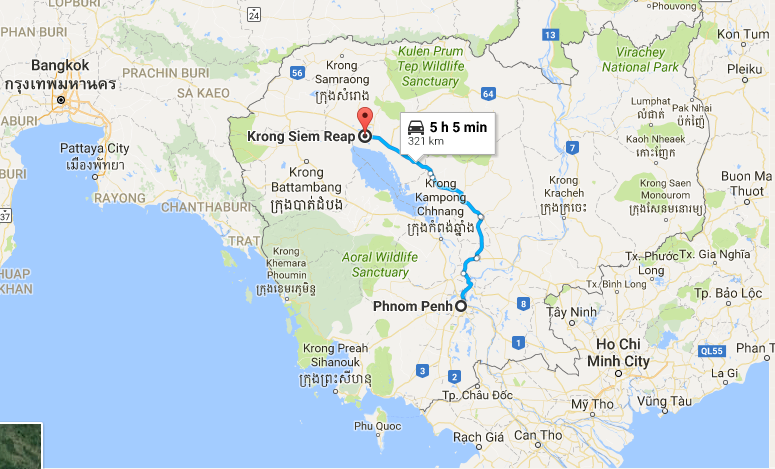
Siem Reap literally means “Siam Defeated,” Siam being Thailand. These days, however, the closest thing to fighting in this small city of about a 1/2 million is the tuk-tuk drivers angling for position. Or throngs of tourists in Angkor Archaeological Park vying for position to get a ‘5-star photo’ of a temple without a bunch of other tourists in it.
This once quaint village has become quite the boom town. The Angkor temples receive more visitors than anywhere else in Cambodia (over 4 million, and on their way to many more thanks to the Chinese tourist explosion) and Siem Reap is a pleasant place to stay while touring them. No building can be higher than Angkor Wat (65 meters), so there are no skyscrapers like in Phnom Penh. There are, however, about a gazillion tuk-tuk drivers, hotels, restaurants and shopping opportunities ranging from the simplest handicrafts to luxury (well, sort of) malls.
Siem Reap
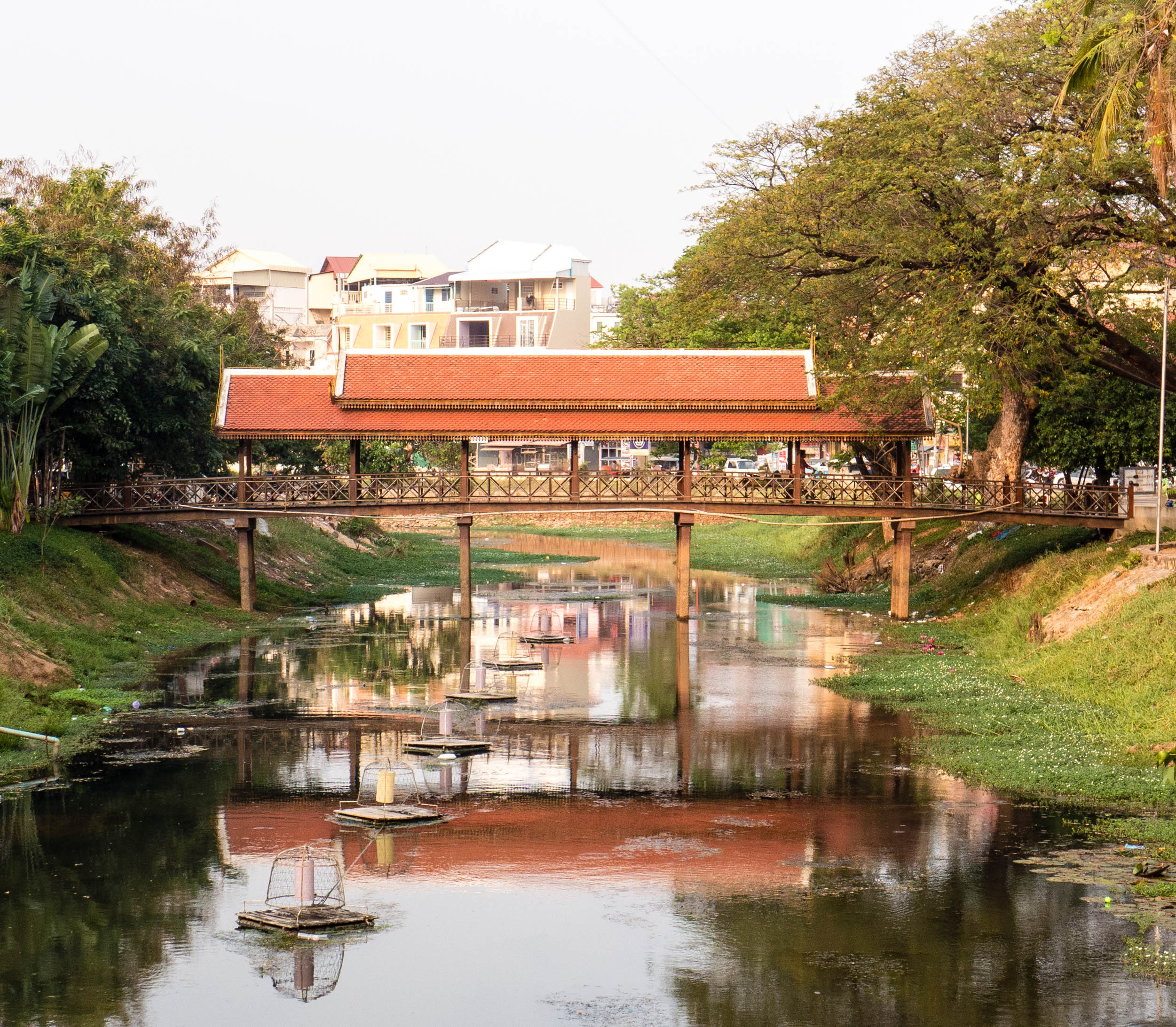
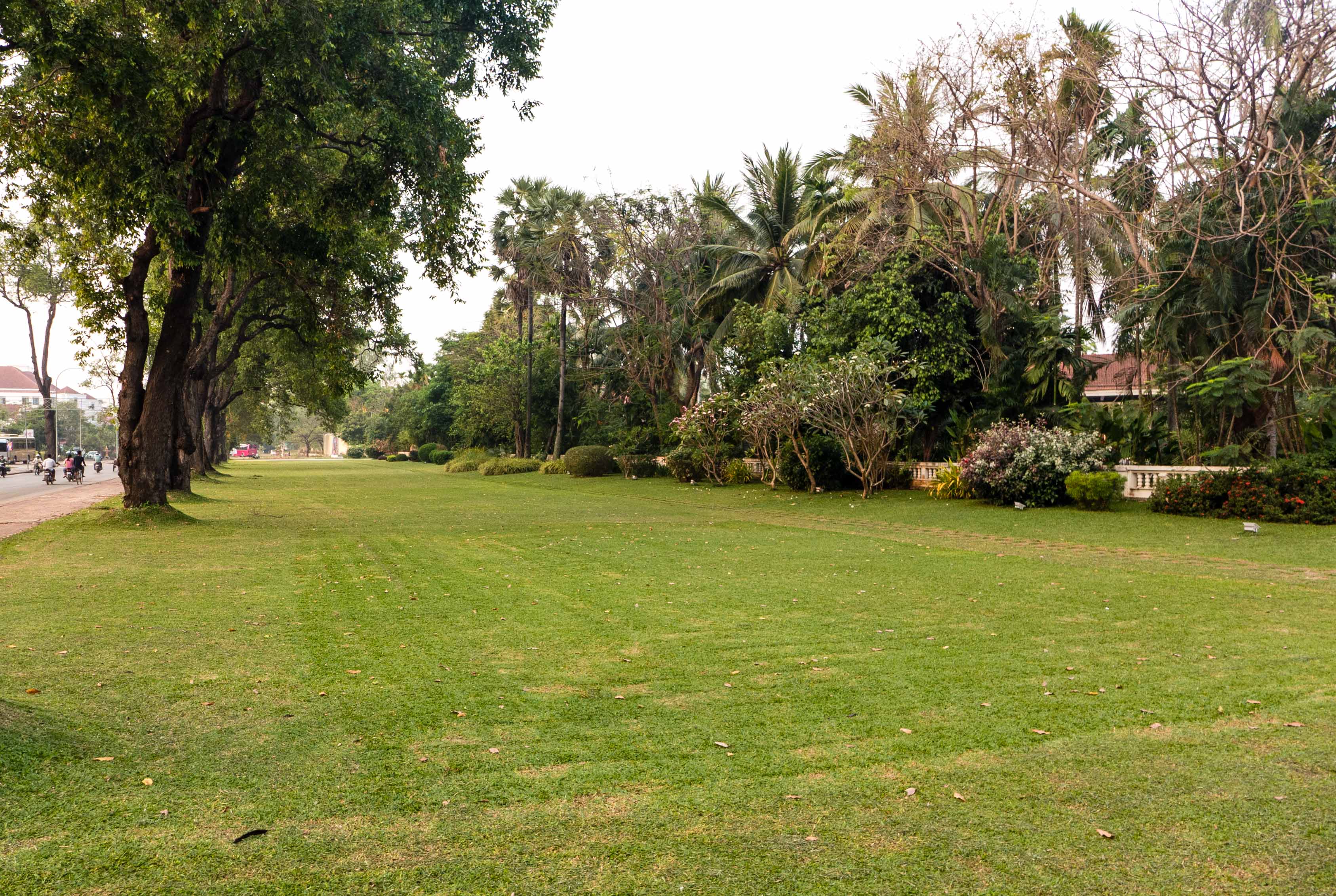
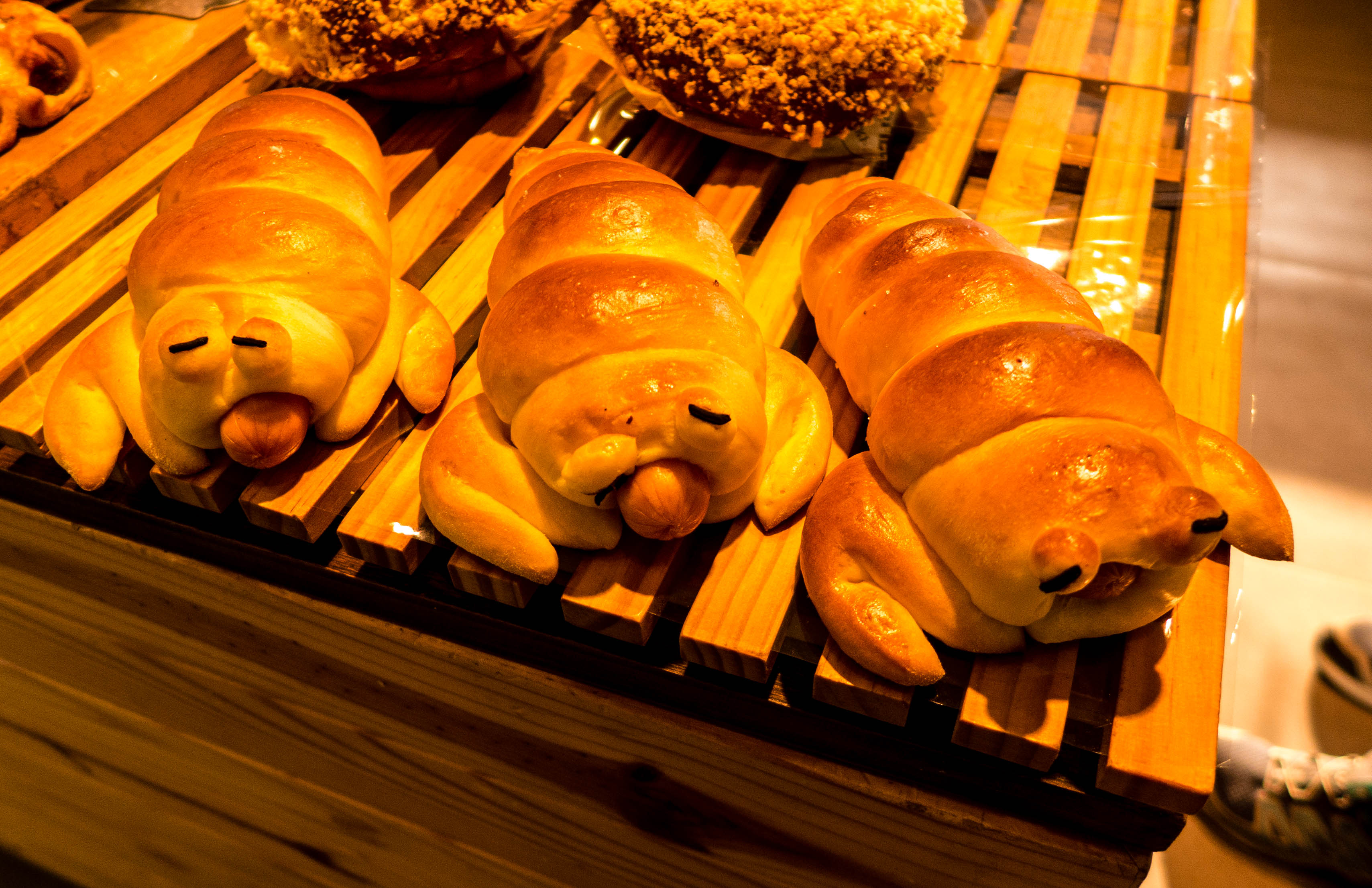
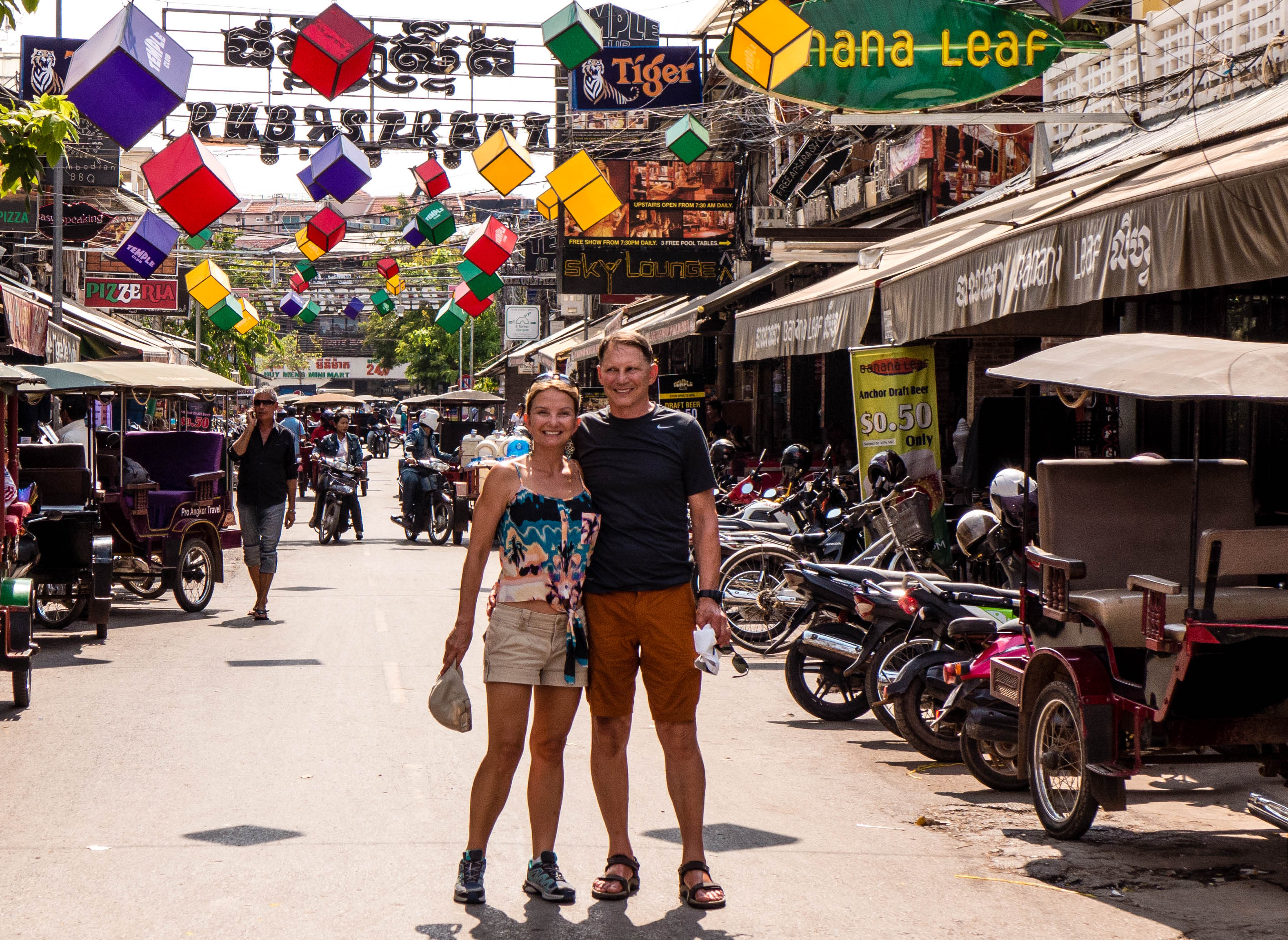

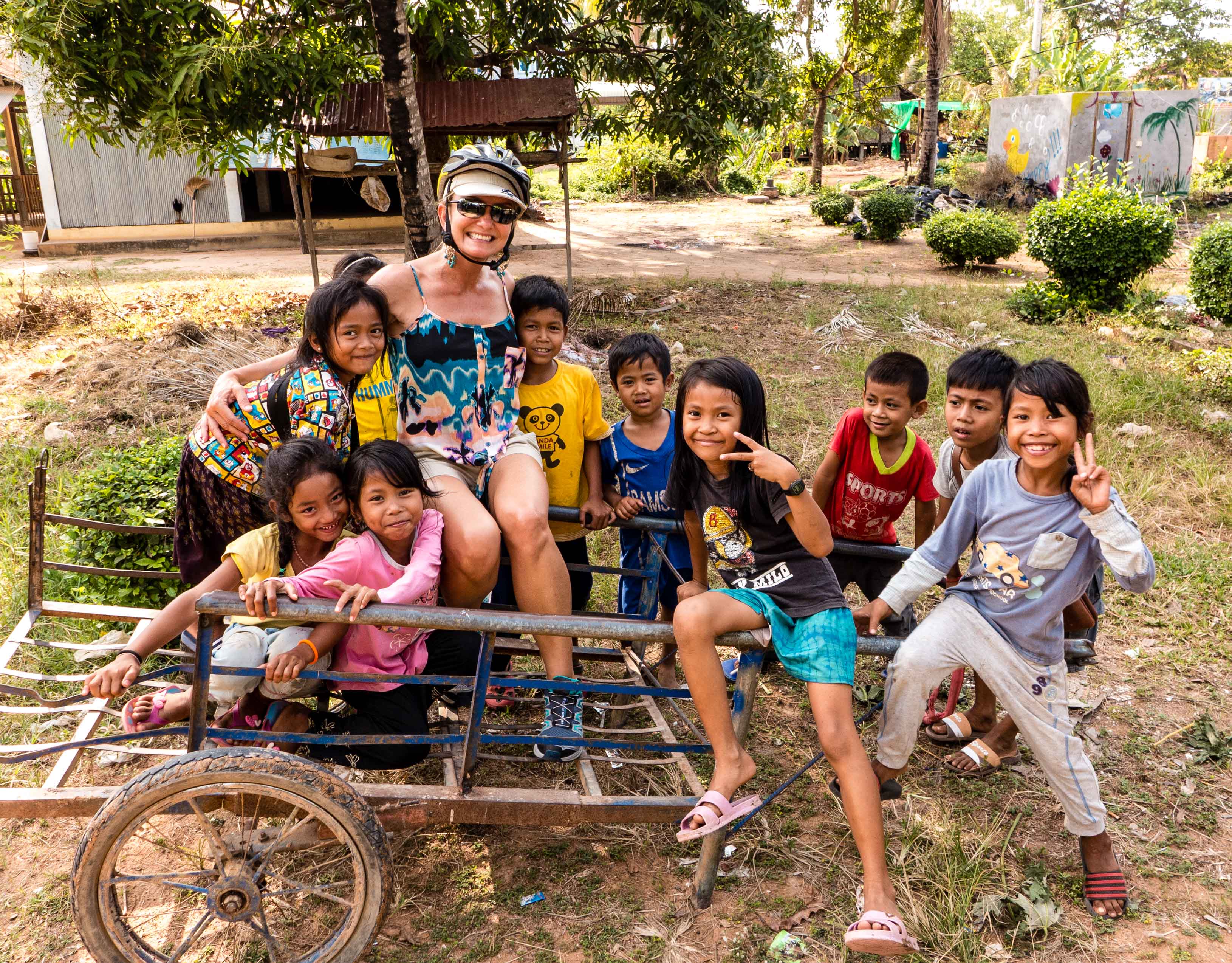
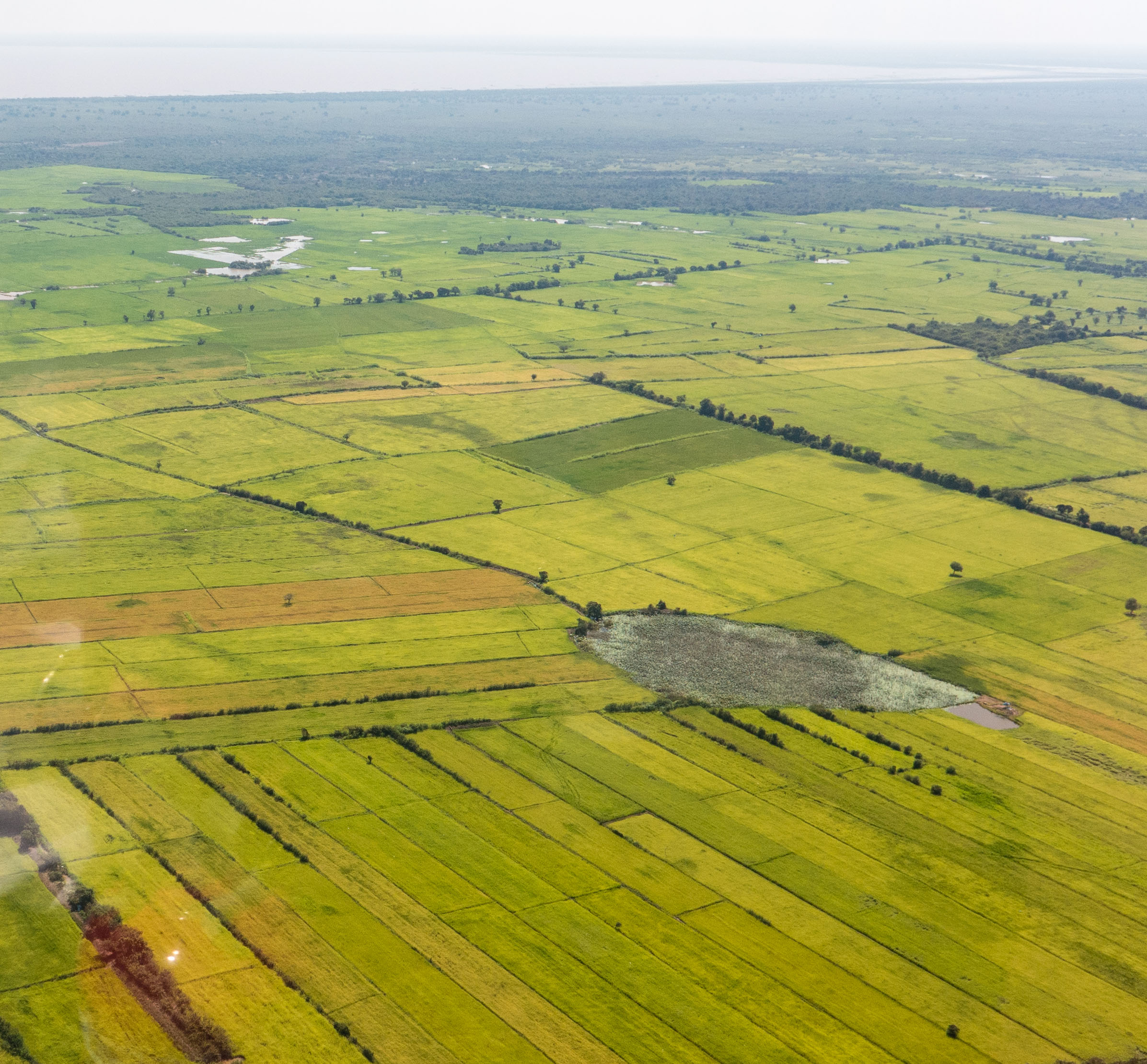
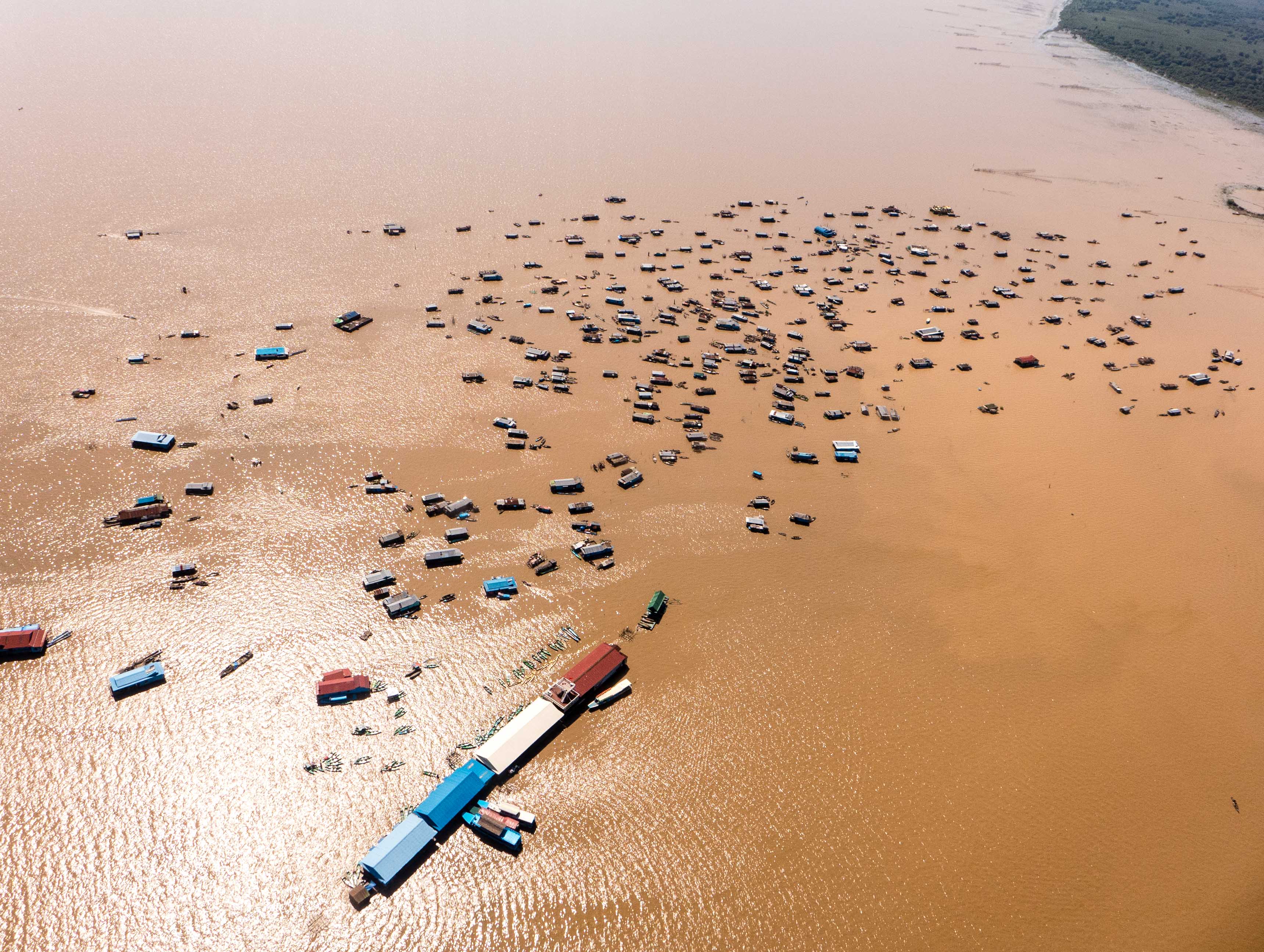
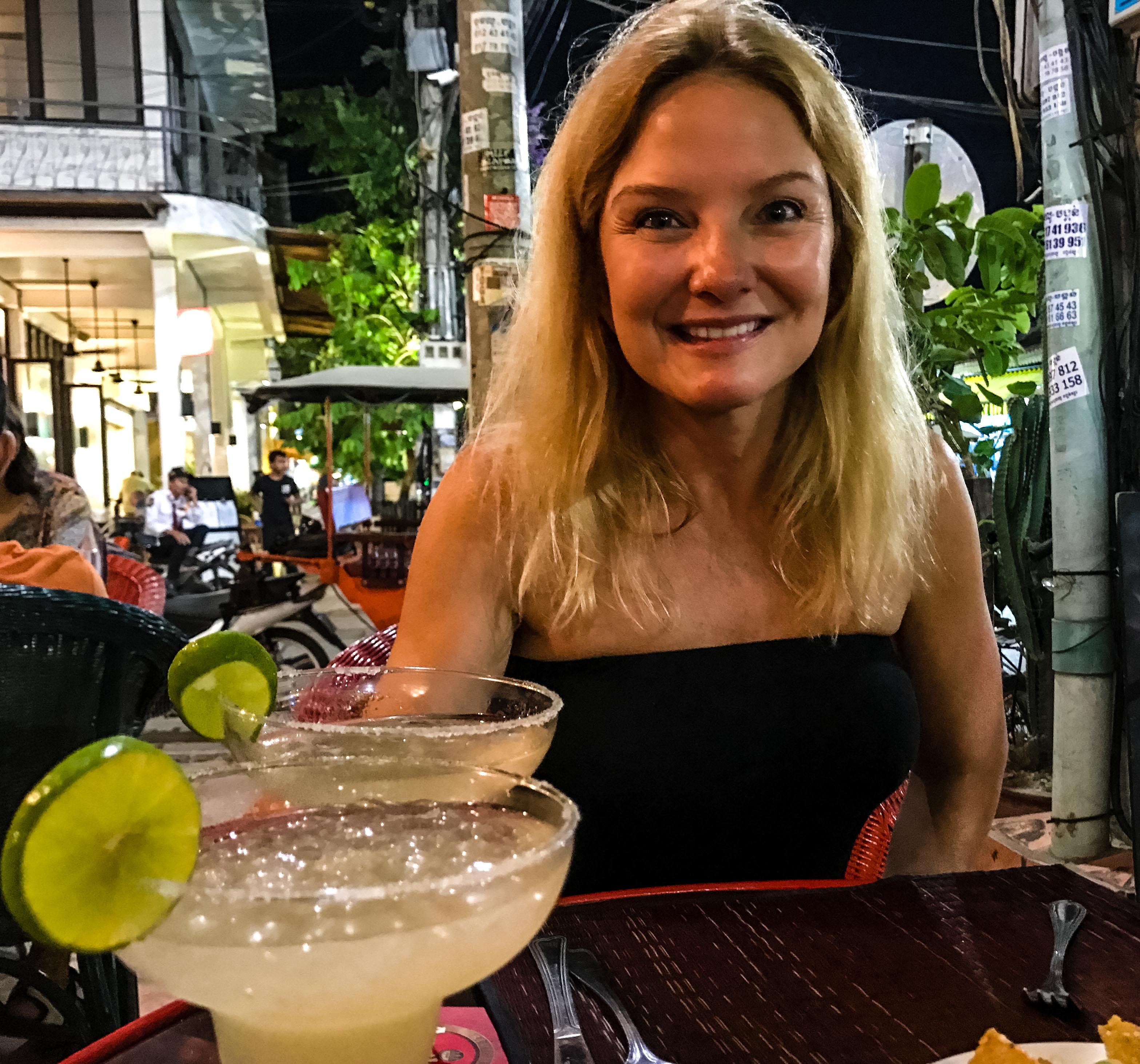
Angkor is one of the most important archaeological sites in the world. For more than 500 years (9th-14th centuries) it was the center of the Khmer Empire. The national flag even has the main temple Angkor Wat in its design.
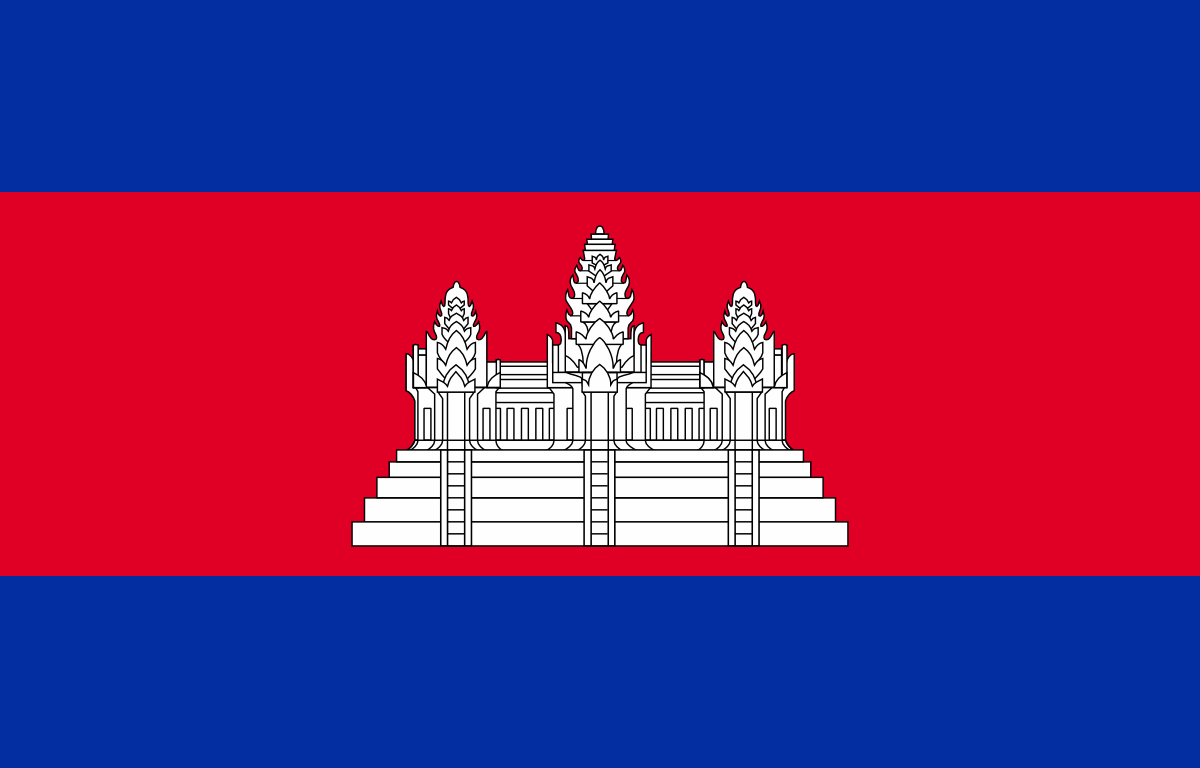
Besides the temples themselves, we were particularly impressed by two museums: Angkor National Museum and Angkor Panorama Museum. Visiting these the day before visiting the temples gave us context and really primed us for seeing the real thing. Both museums are state-of-the-art with displays and videos to explain everything about the temples, their history, their ‘re-discovery’ and their excavation/restoration. The coolest video imagines and depicts the building of Angkor Wat in the 12th century. It seems so realistic.
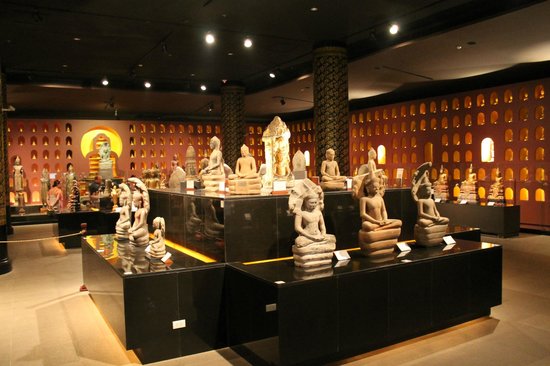
As does the STUNNING 360-degree painting in the Panorama Museum. The bizarre thing about this museum is that is was funded and is maintained by … North Koreans (according to our guide, businessmen, not the government). This must explain why hardly anyone was there; this and the $20 ticket price, which given that admission to ALL of the temples just recently rose from $20 to $37, is relatively expensive. Having said that, the painting is incredible, and we thought it well worth the price. These pictures don’t do it justice – the detail, color, and imaginative scenes were superb – but the last one gives you an idea of the scale.
Another impressive element to the temples is Lidar technology work done by Dr. Damien Evans, expatriate Director of the University of Sydney’s Research Centre in Siem Reap, Cambodia, where he is a co-director of the Greater Angkor Project. Dr. Evan “has lived and worked in southeast Asia for over fifteen years, experimenting with new and exciting methods of archaeological survey. Using laser and satellite technology, Damian and his team have been able to reveal the extent of the settlements surrounding Angkor, leading to an entirely new appreciation of the size and scale of the Khmer civilization.” Anyone interested in this history, archeology or the amazing things being done with Lidar, should check out this article and video.
An interesting fact about how so much is known and has been extrapolated about the Angkor region and Khmer empire is that in the 13th century, the Chinese emperor sent a diplomat named Zhou Daguan to Cambodia. Zhou’s records actually survived, and have provided invaluable historical insight and information.
We want to give a special shout-out to our guide, Sophy Chhay, whom we found through ToursByLocals. He was one of the most considerate, hard-working, authentic guides we’ve ever had and he really made our time in Cambodia amazing.
The Angkor Temples
One of the things we didn’t really understand before researching this trip is the magnitude and multitude of Angkor temples that exist in Cambodia. Of course, we had heard of Angkor Wat, but that was pretty much the extent of our knowledge. But the region of Angkor stretches out over 400 square kilometers and has more than a thousand temples (in various states of disrepair). We were exhausted after visiting 5 of them in one day – the best 5 according to Sophy. He did an excellent job of picking out a selection that was varied in terms of time period, architectural style, prominent features and reason for popularity. Here’s what we saw:
Angkor Wat
The biggest and most spectacular of all the temples at Angkor. It’s also said to be the largest religious monument in the world.It was originally constructed as a Hindu temple of god Vishnu, gradually transforming into a Buddhist temple towards the end of the 12th century. It has a moat and an outer wall that stretches for 2 miles. Within the wall, there are large grounds with a long path to the main temple. The galleries of the temple are lined with detailed bas-reliefs mainly showing epic Hindu stories. We climbed to the top of the central towers and looked out over the whole site from there. Spectacular.
It has a moat and an outer wall that stretches for 2.2 miles. Within the wall, there are large grounds with a long path to the main temple. The galleries of the temple are lined with detailed bas-reliefs mainly showing epic Hindu stories. We climbed to the top of the central towers and looked out over the whole site from there. Lovely.
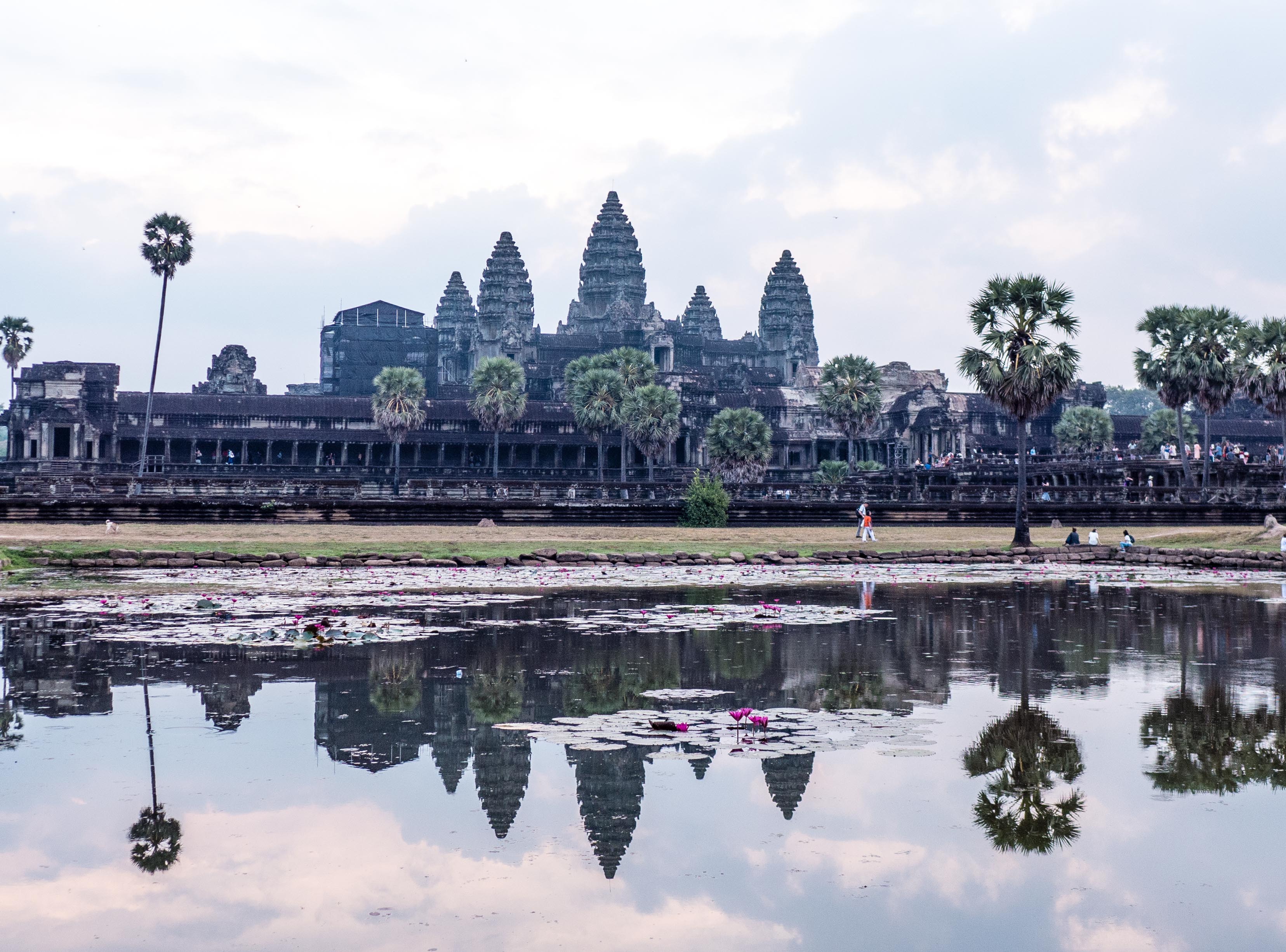
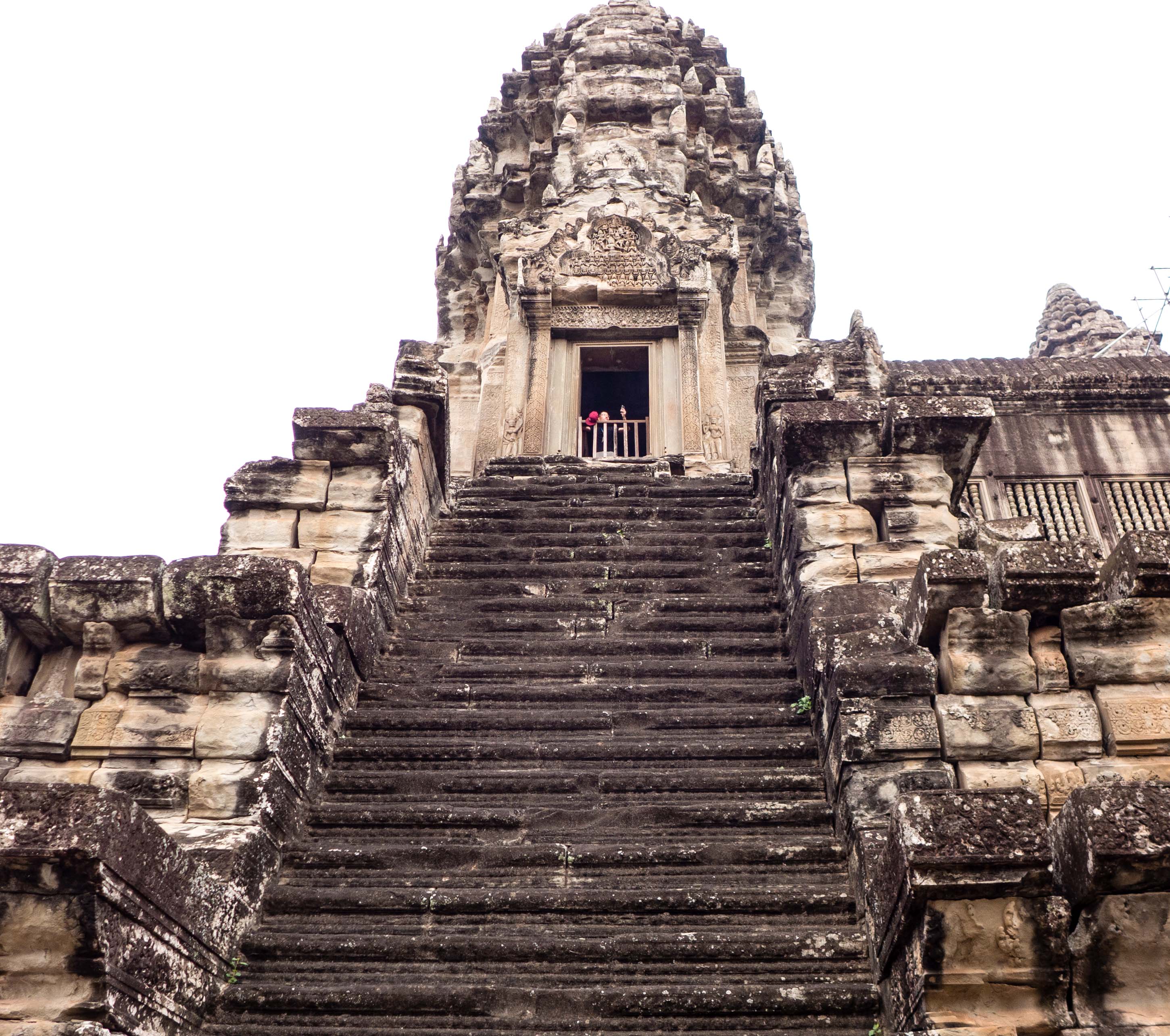
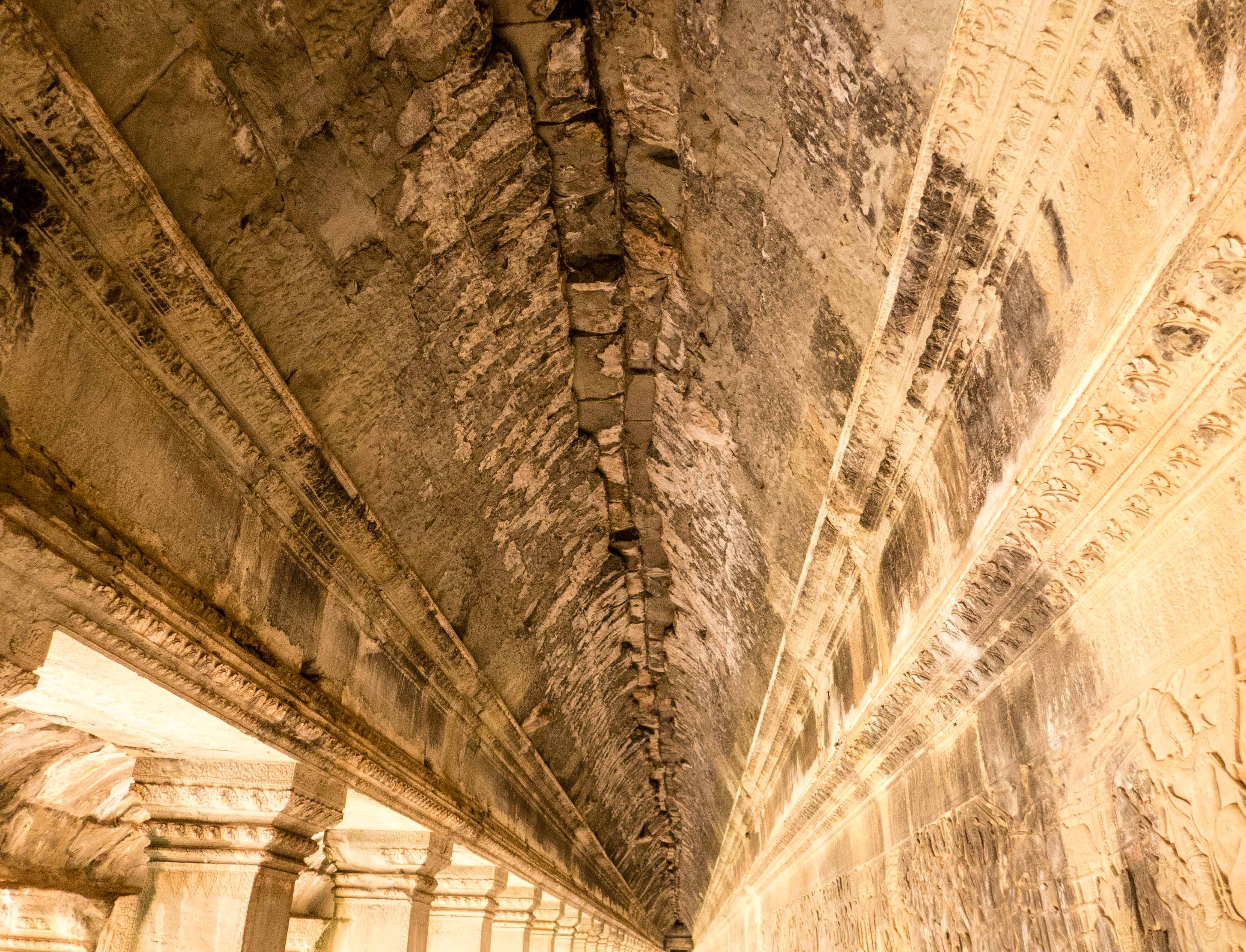
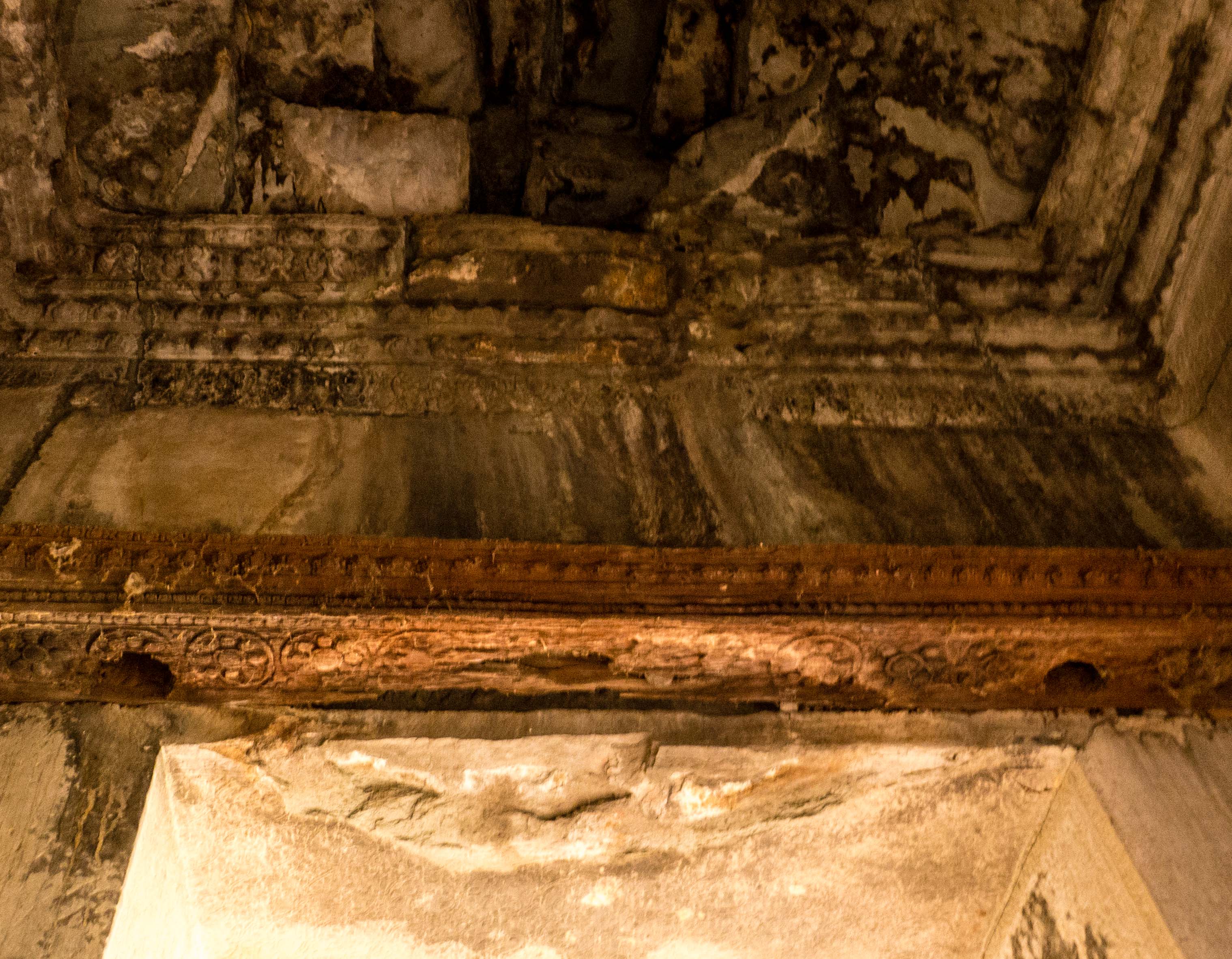
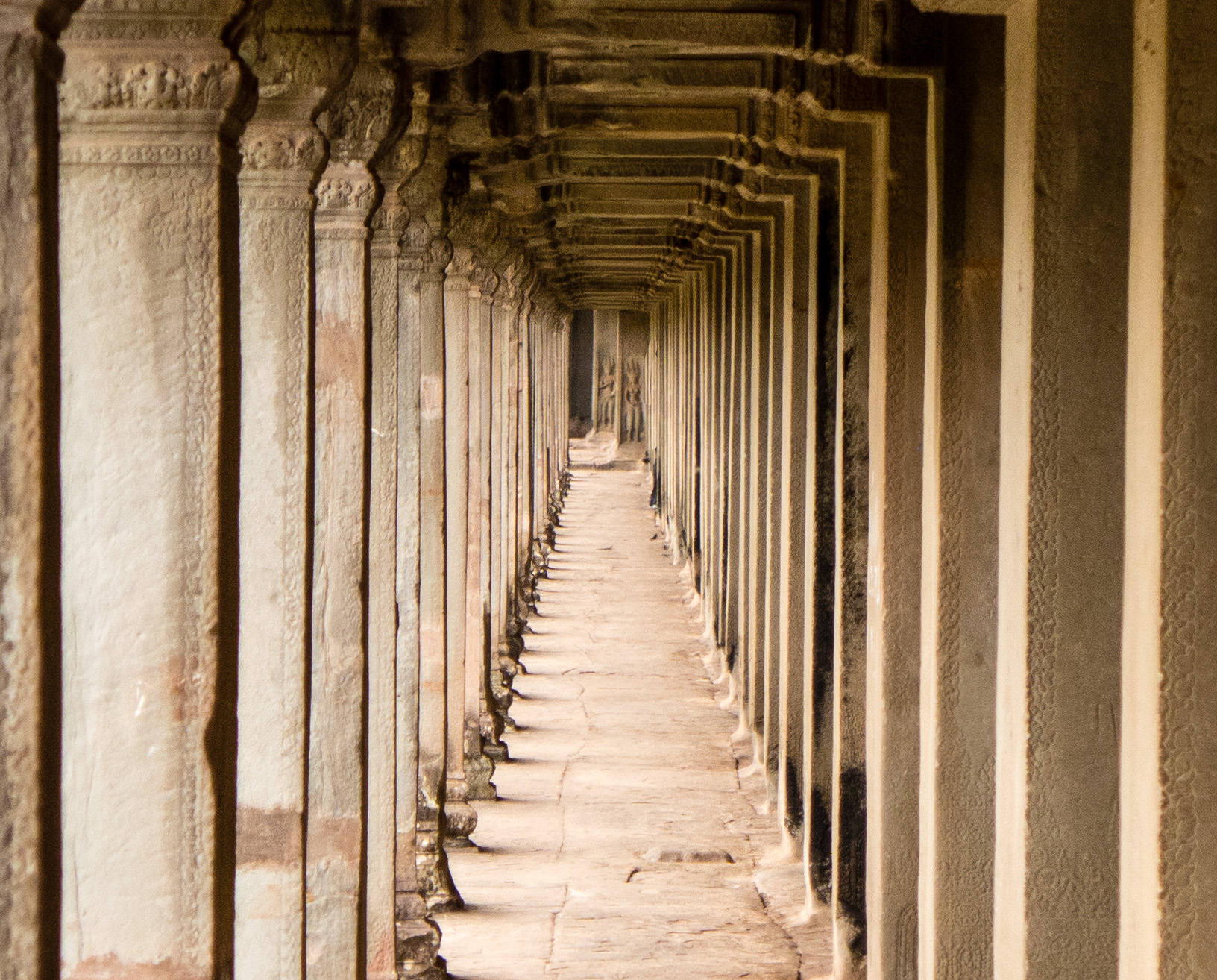
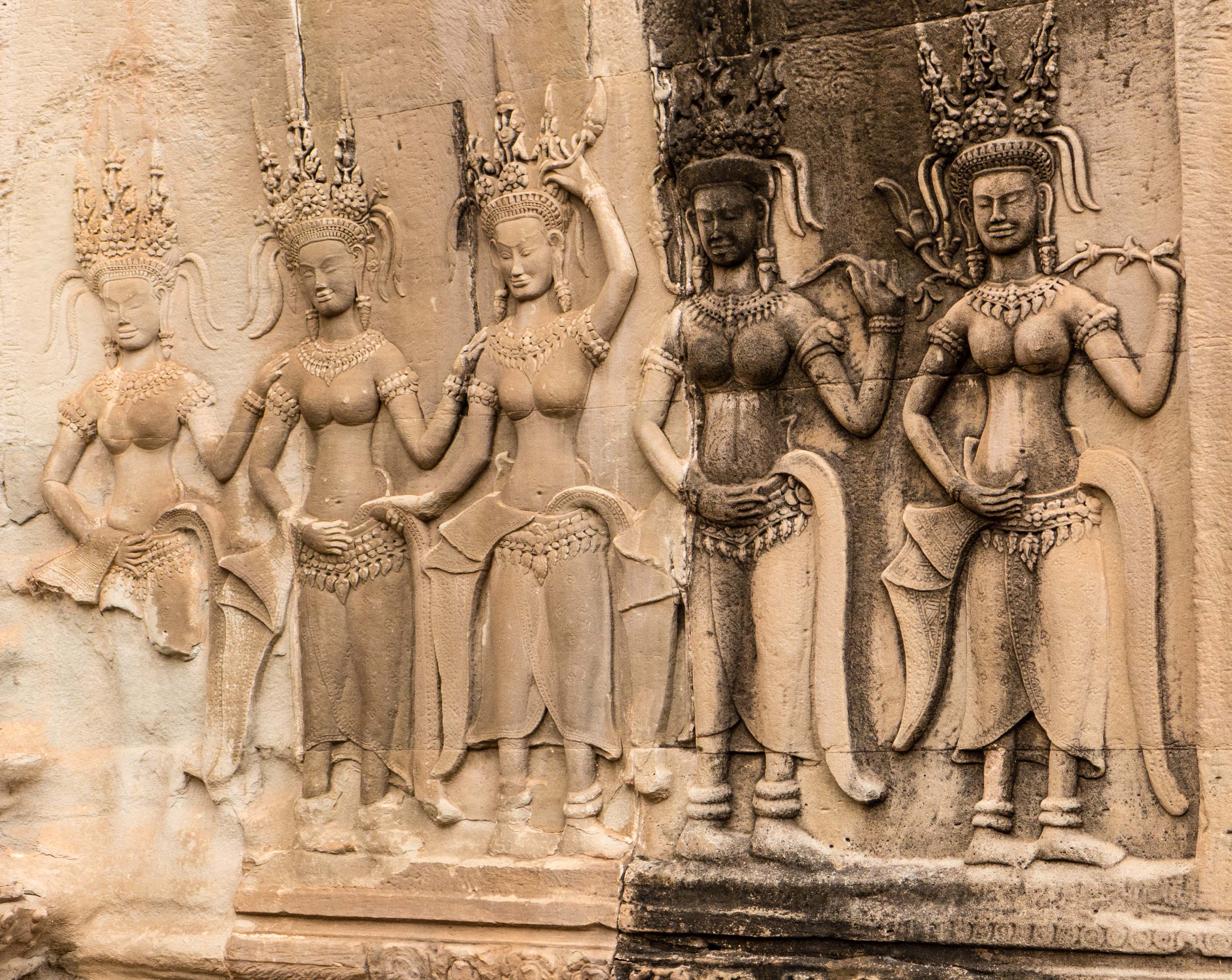
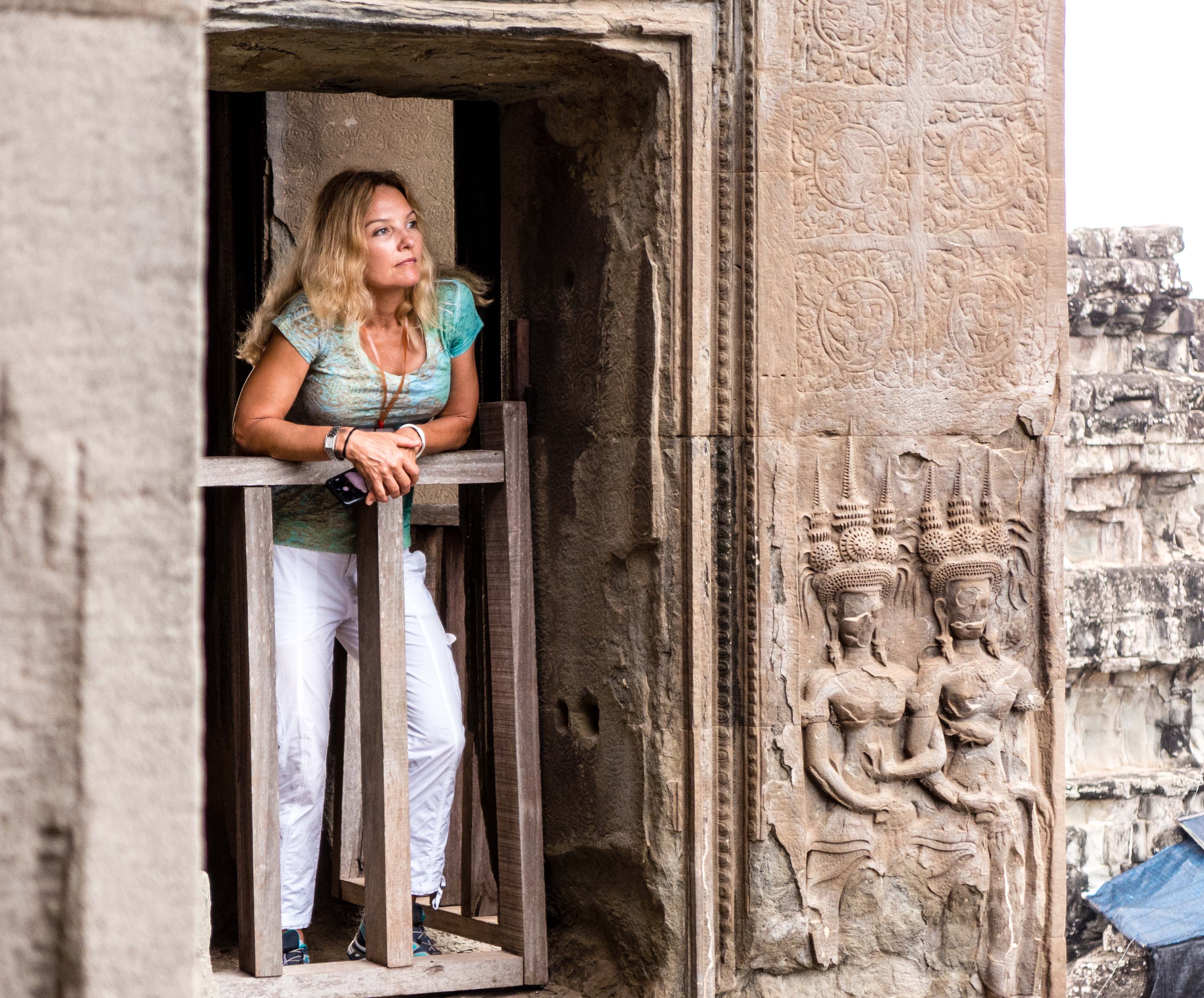
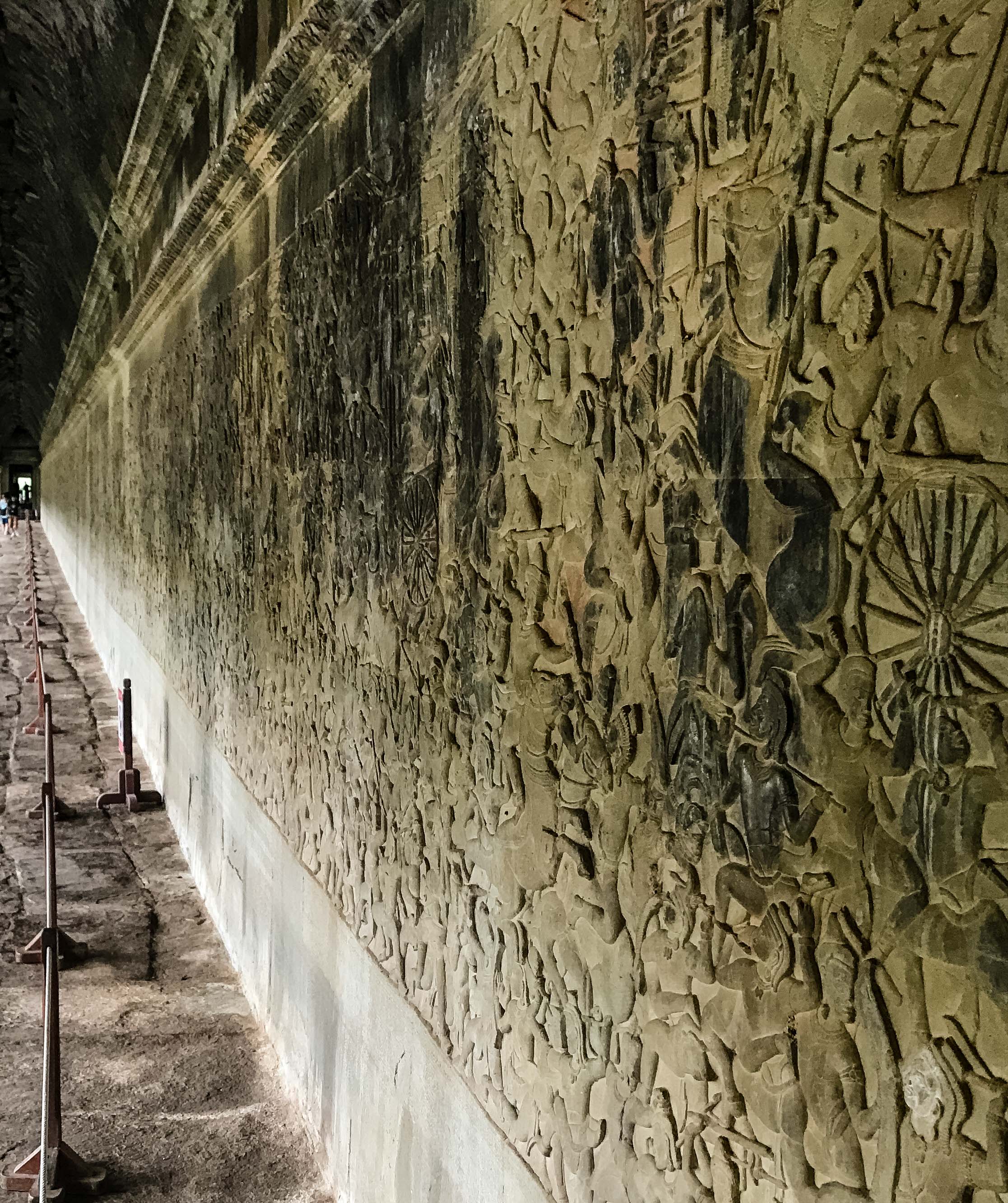
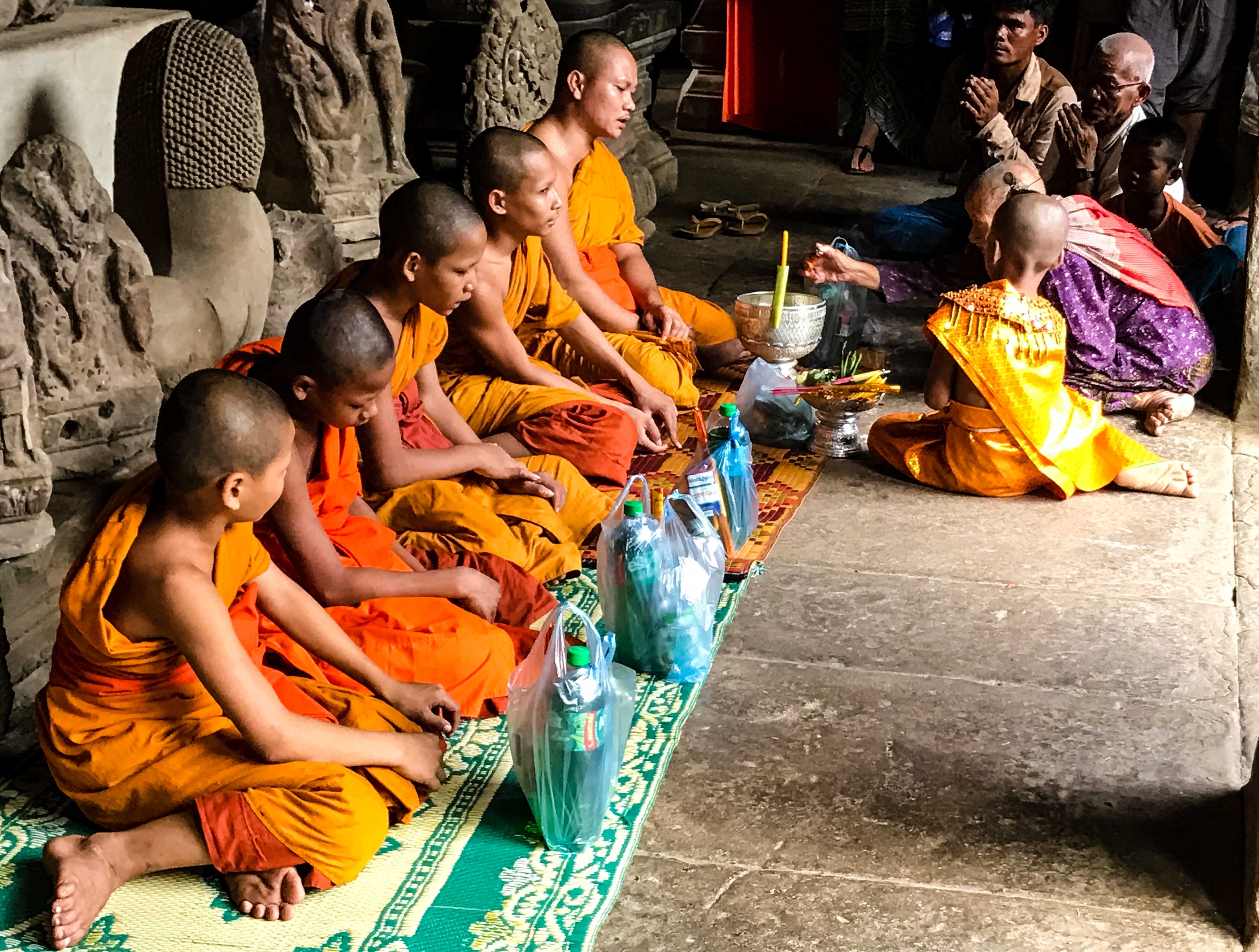
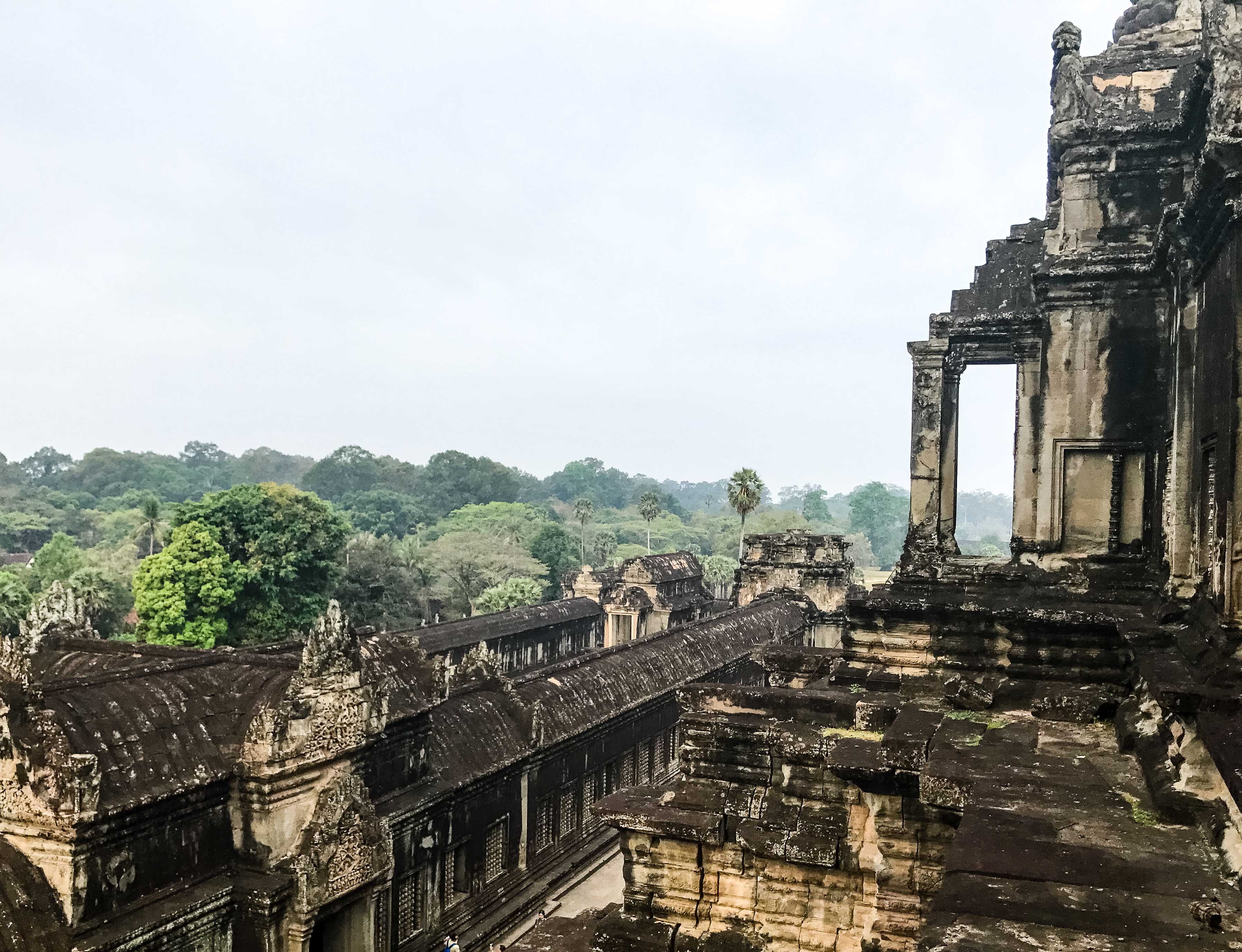
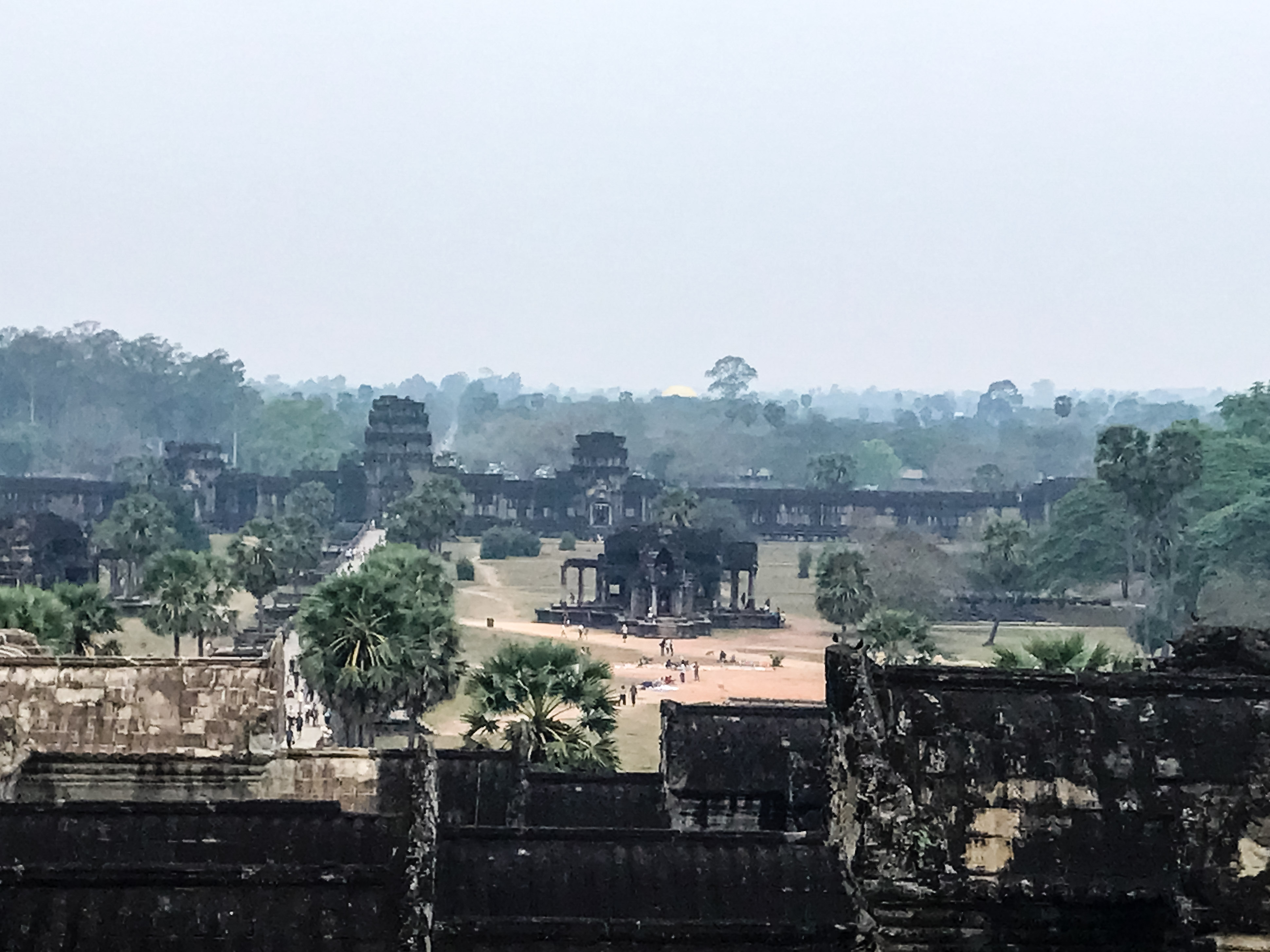
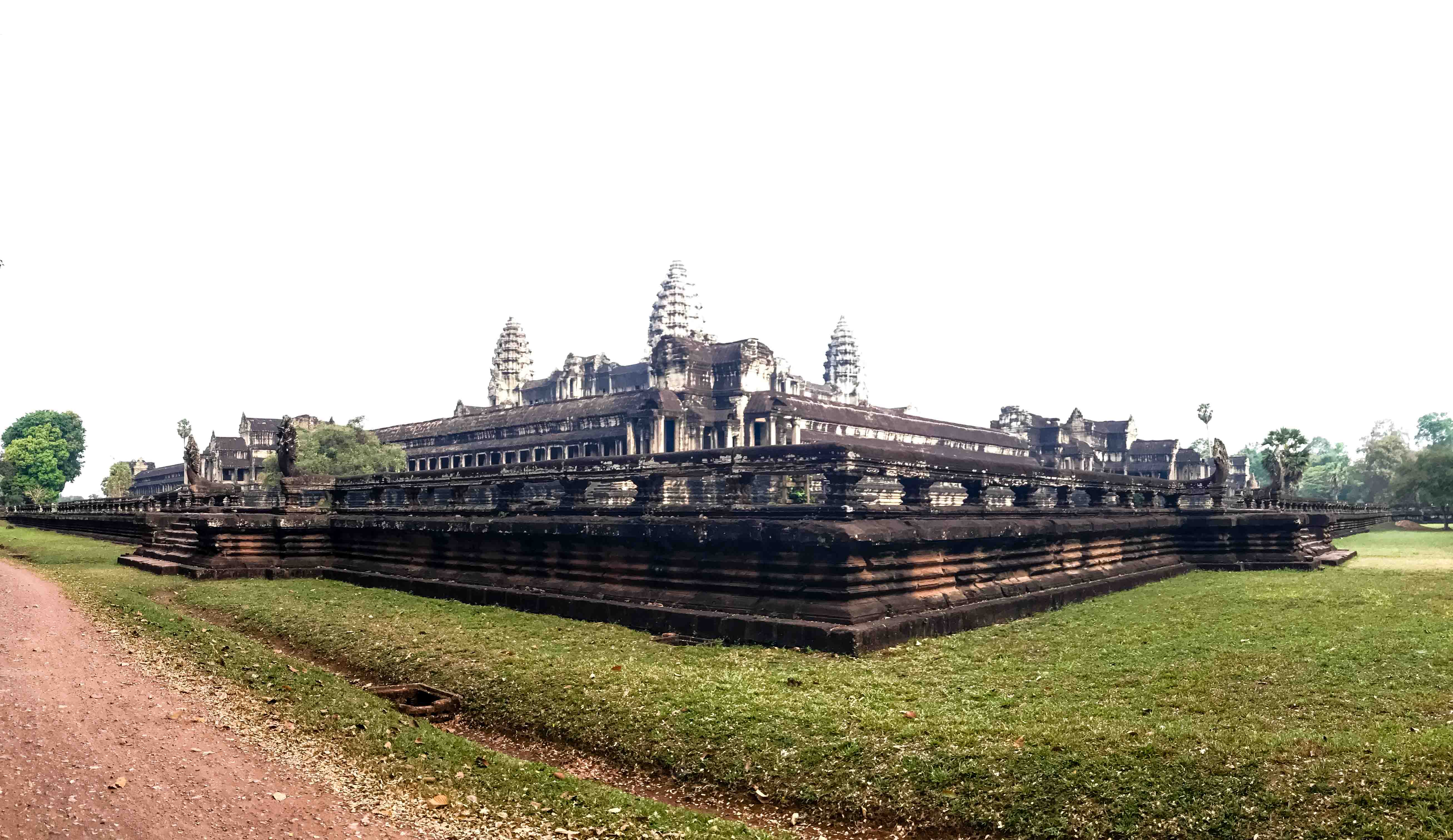
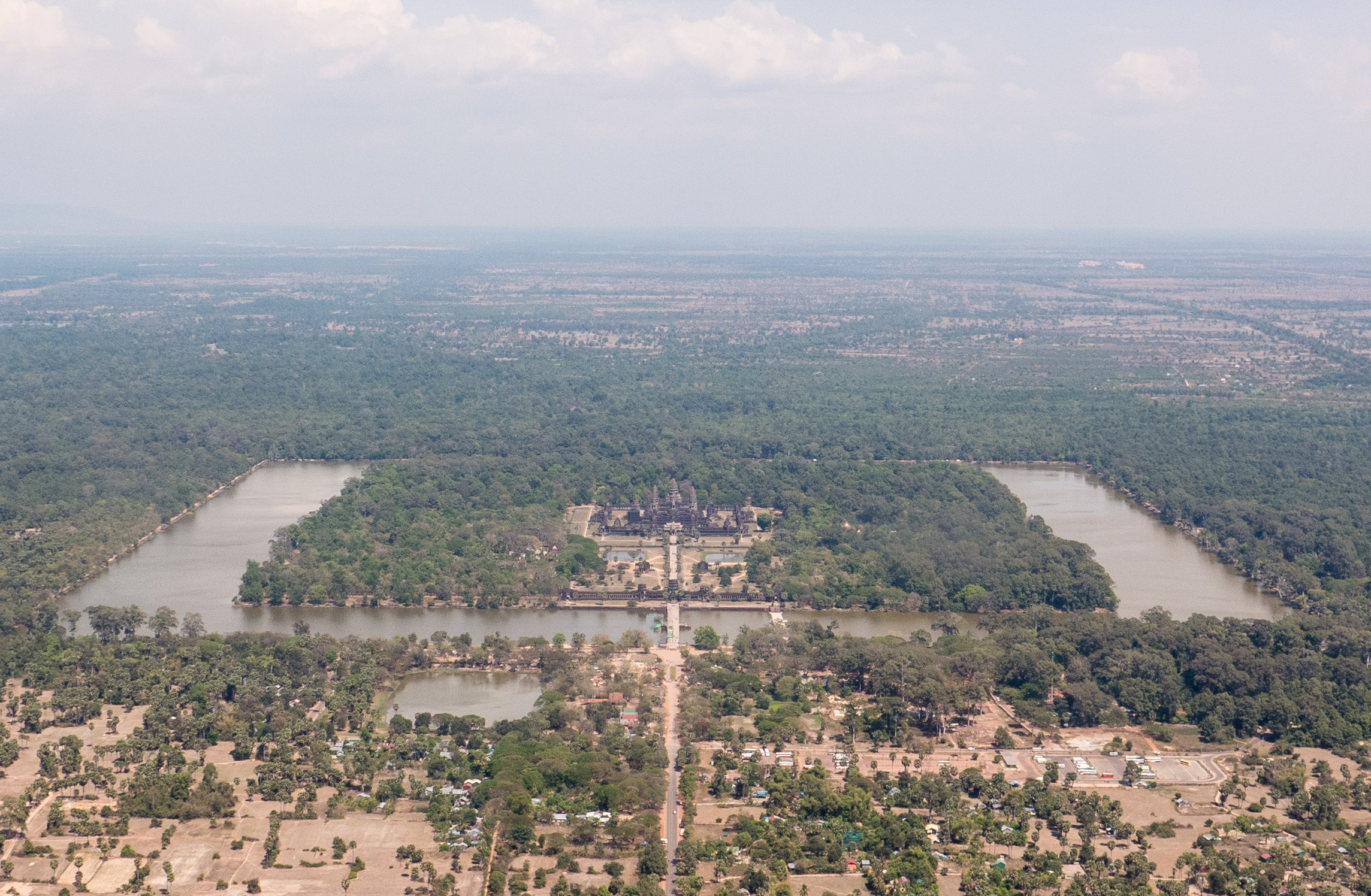
Ta Prohm
Ta Prohm is one of the most popular temples for tourists in the Angkor region because of the atmosphere created by the trees and plants which have been left to grow in it. Unlike many of the other large sites, which have been restored, this has been largely left to show the effects of time. It was used as a set for the Tomb Raider movie (Angelina Jolie).
Pre Rup
Pre Rup was constructed sometime in the 10th Century to be the capital of the new Khmer Empire. It is one of the most architecturally and stylistically noteworthy temples. The walls and towers are covered with ornate bas-reliefs. Carved guardian lions sit atop the temple terraces. Once again we climbed to the top to enjoy panoramic views of the surrounding countryside.
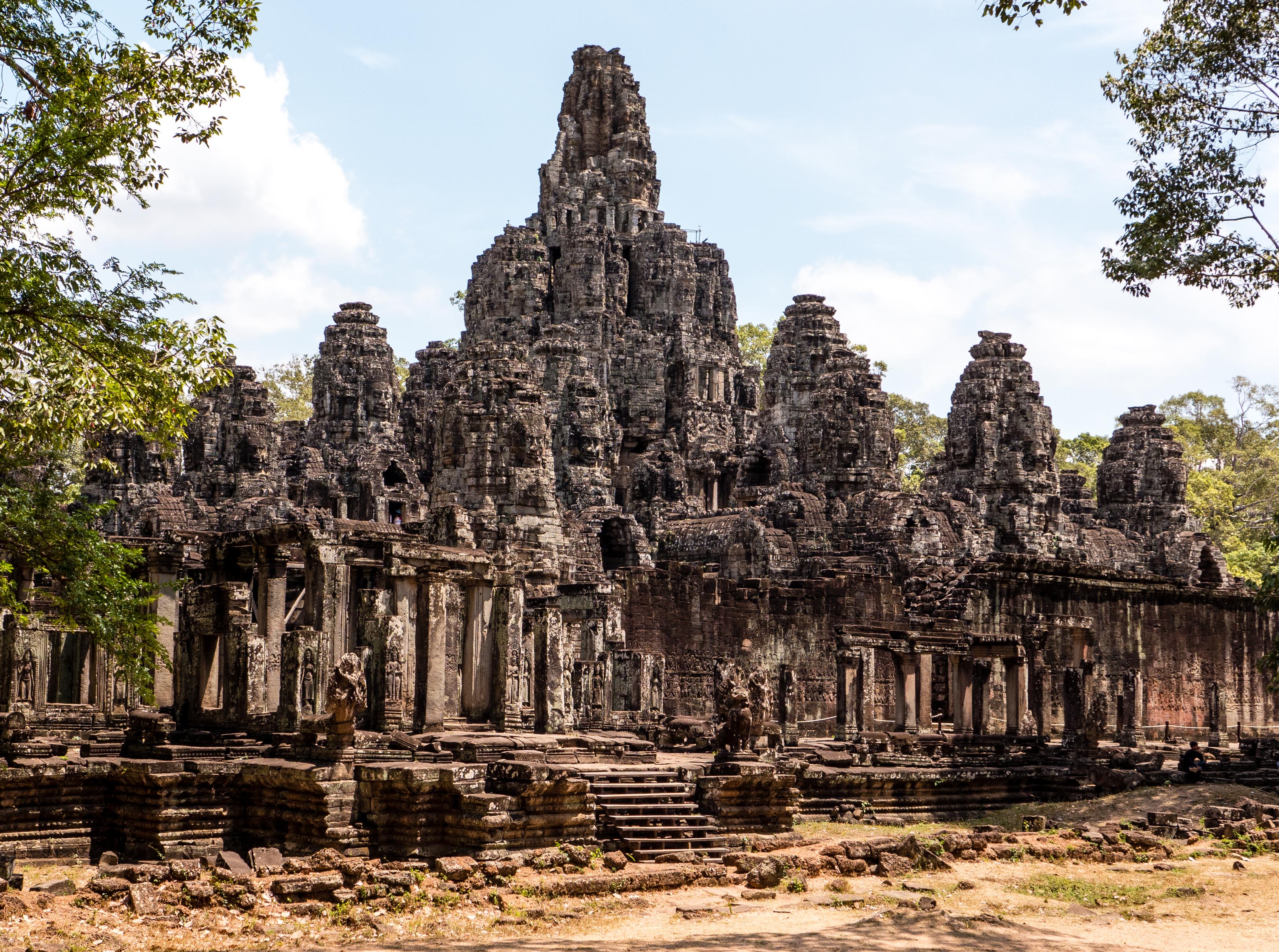
Banteay Srei
Considered ‘The Louvre’ of the Khmer Empire, Banteay Srei is again one of the most popular tourist destinations. The only major temple at Angkor not built by a monarch, this temple was dedicated to the Hindu god Shiva. Constructed in the 10th century, Banteay Srei loosely translates to “citadel of women” or “citadel of beauty”. The intricately and delicately crafted sculptures and carvings throughout Banteay Srei, especially given their provenance, is mind-boggling. Carvings are densely cluttered on the temple walls, depicting a wonderful assortment of animals, warriors, religious figures, and more. Banteay Srei’s red sandstone is particularly colorful, glowing with hues of pink and salmon.
The Bayon
The Bayon is best known for the massive smiling stone faces carved into the sides of its towers. Although unknown, really, it’s estimated there were about 200 of these huge benevolent faces. They seem to beam their peace and happiness in every direction from every tower. Bayon Temple is unique in that it was the only state temple built primarily as a Mahayana Buddhist shrine dedicated to the Buddha. After the death of Jayavarman, the features of the Bayon Temple were altered according to the religious belief of his successors, thus containing Hindu and Theravada Buddhist elements that were not part of the temple’s original plans.
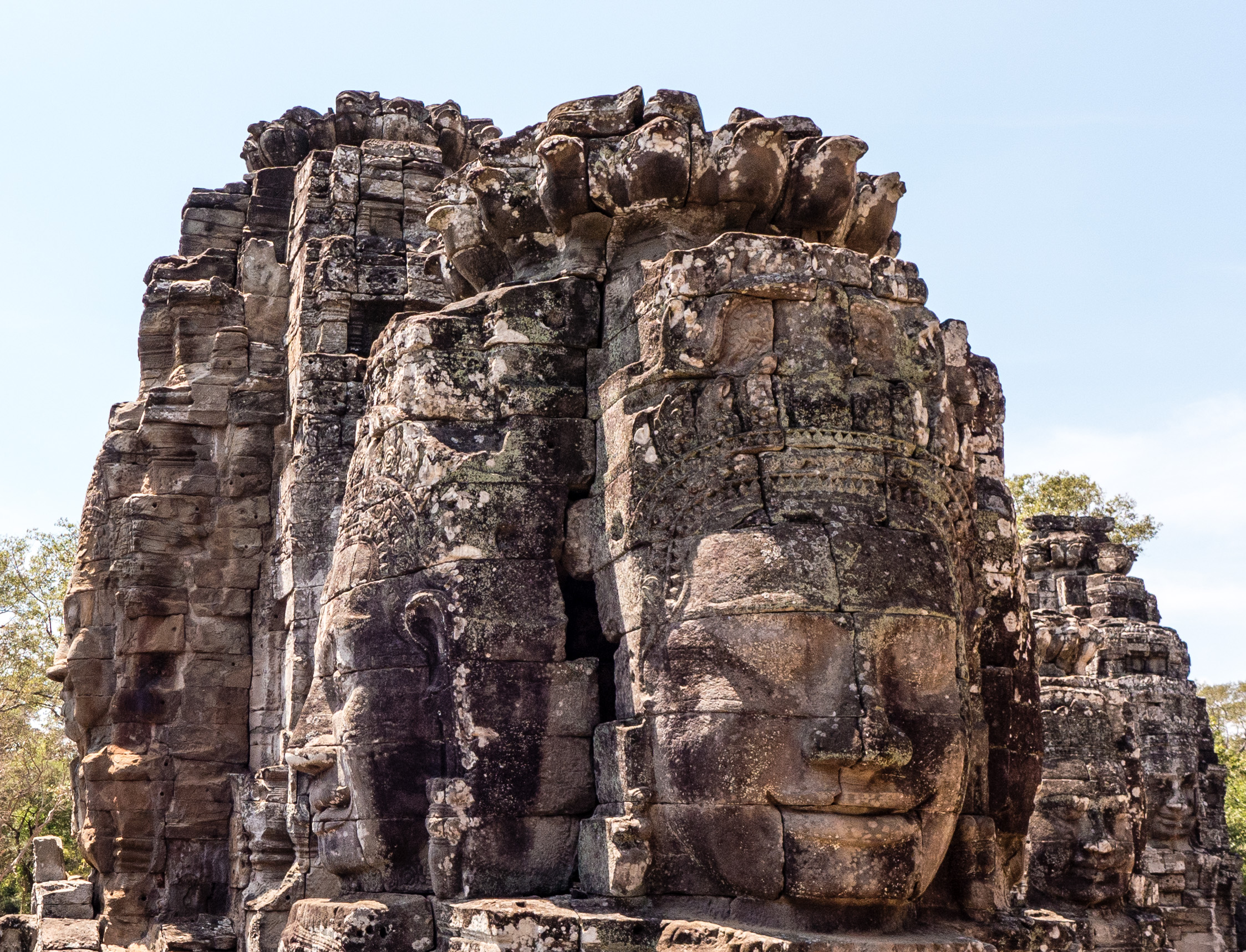
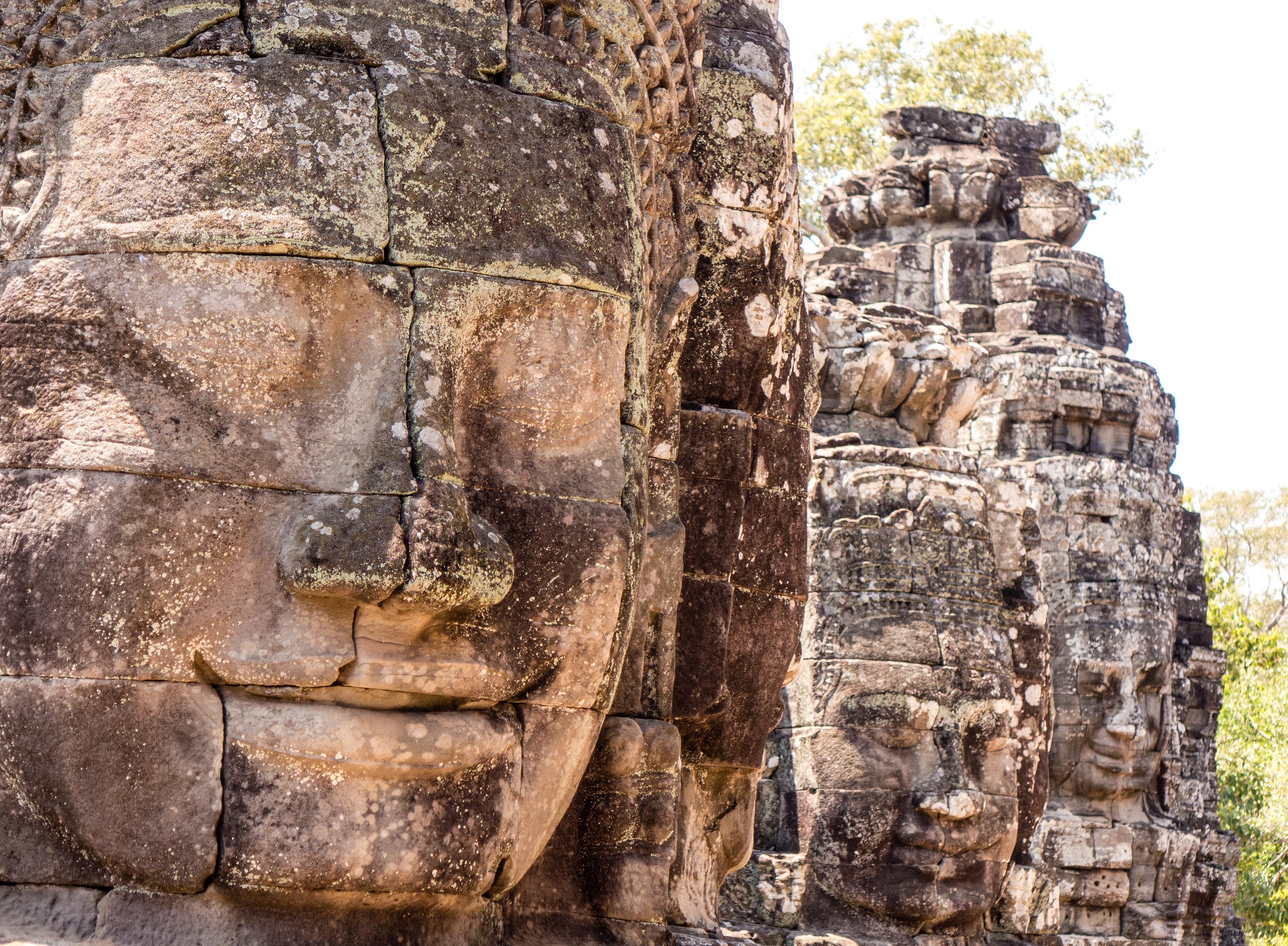
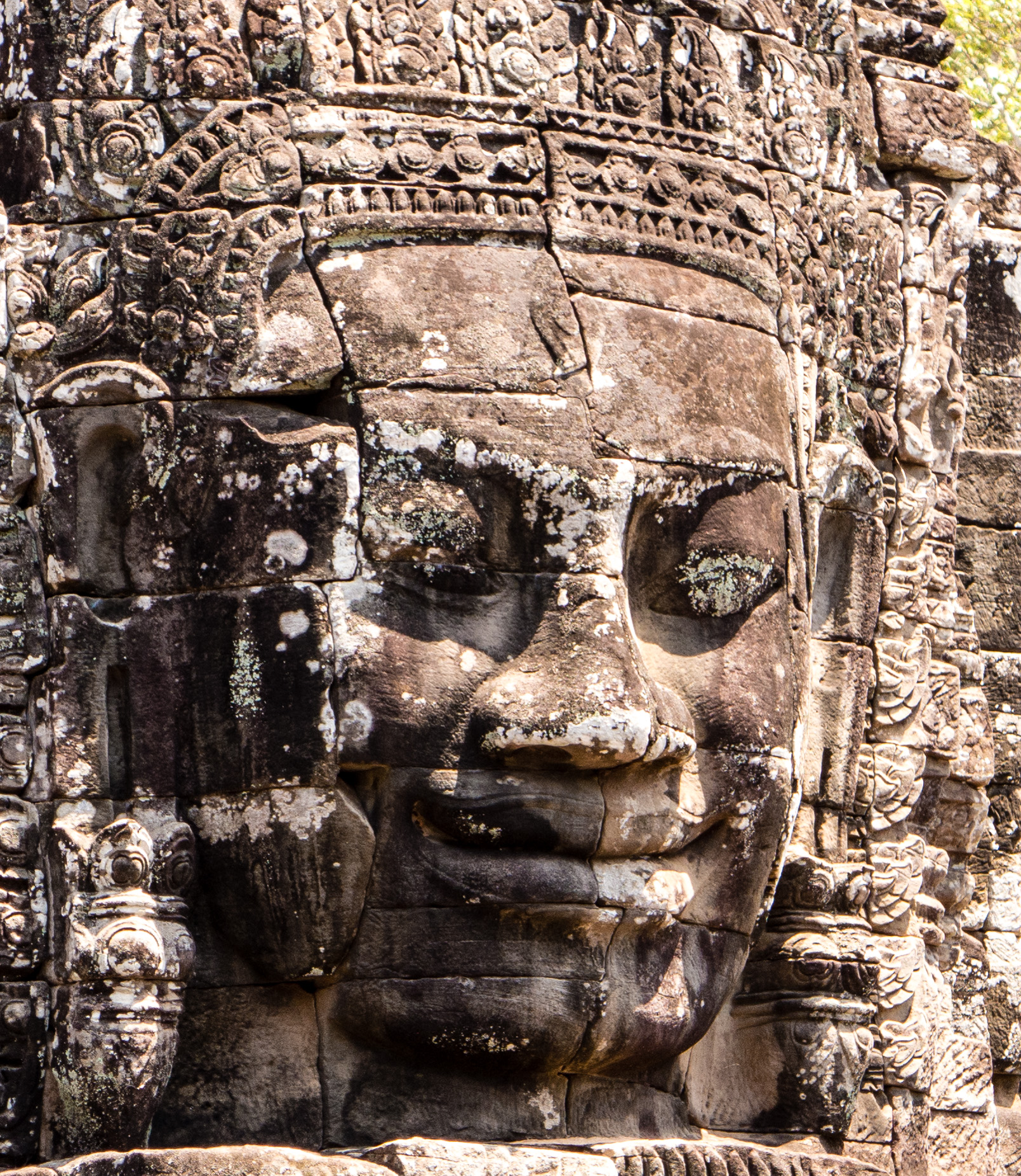
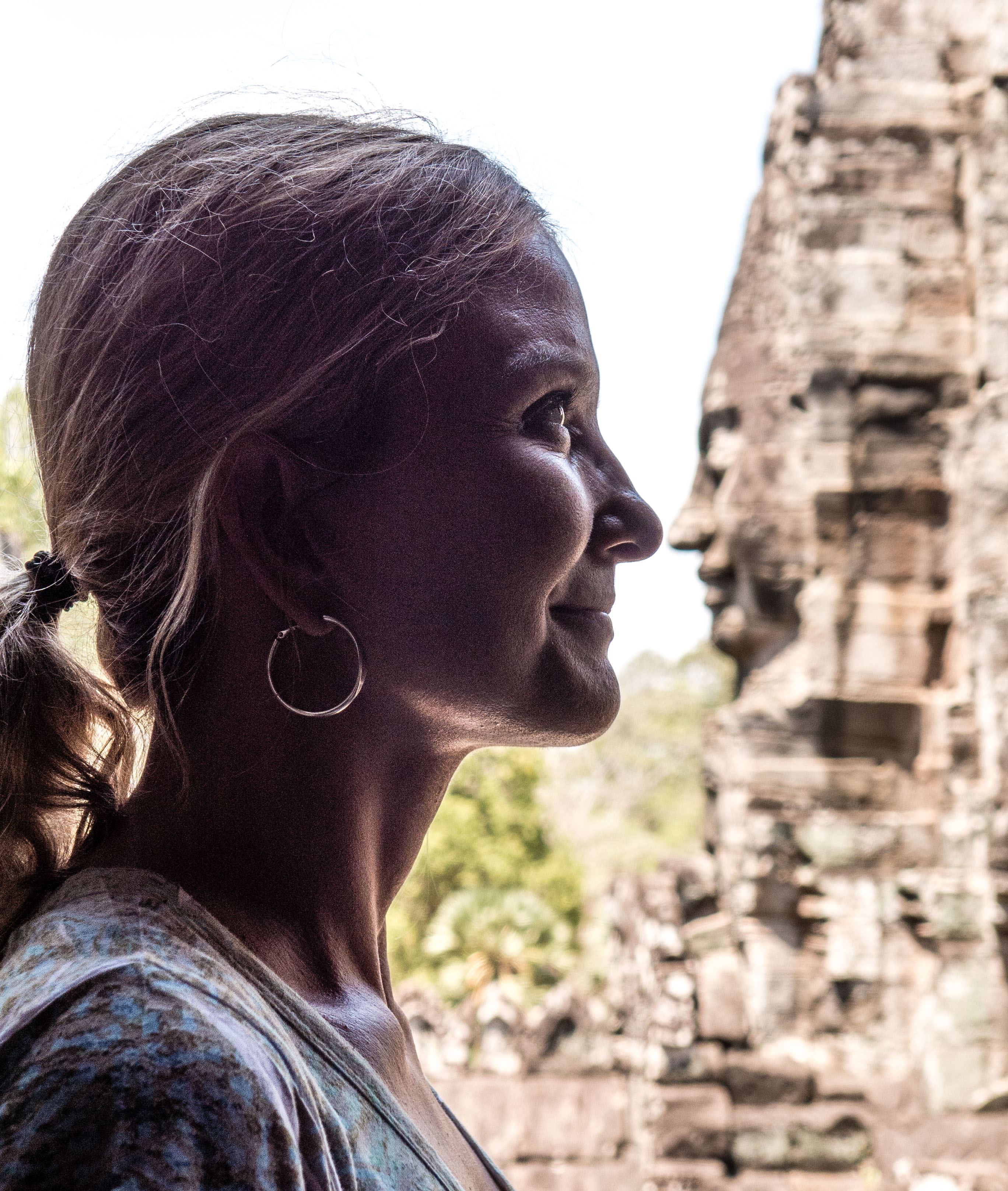
The Bayon is close to The Terrace of the Elephants, a 300-meter long terrace covered in bas-relief sculptures of elephants, horses, lions, dancers, and warriors that must have been stunning in their heyday. Khmer King Jayavarman VII – the most successful and well-loved kings of the Khmer empire – ordered the construction of the terrace sometime in the late 12th or early 13th century. According to Zhou’s records, the Terrace of the Elephants was once covered in wooden pavilions and golden-framed mirrors. The mirrors were used to reflect the events – religious ceremonies and parades – that used to take place in the courtyard below the terrace.The Terrace of the Elephants is considered to be the magnum opus of King Jayavarman VII’s kingship, and perhaps the grandest royal terrace in Cambodia. Loving elephants as we do, we completely agree. Wish we could’ve seen it in all its splendor.
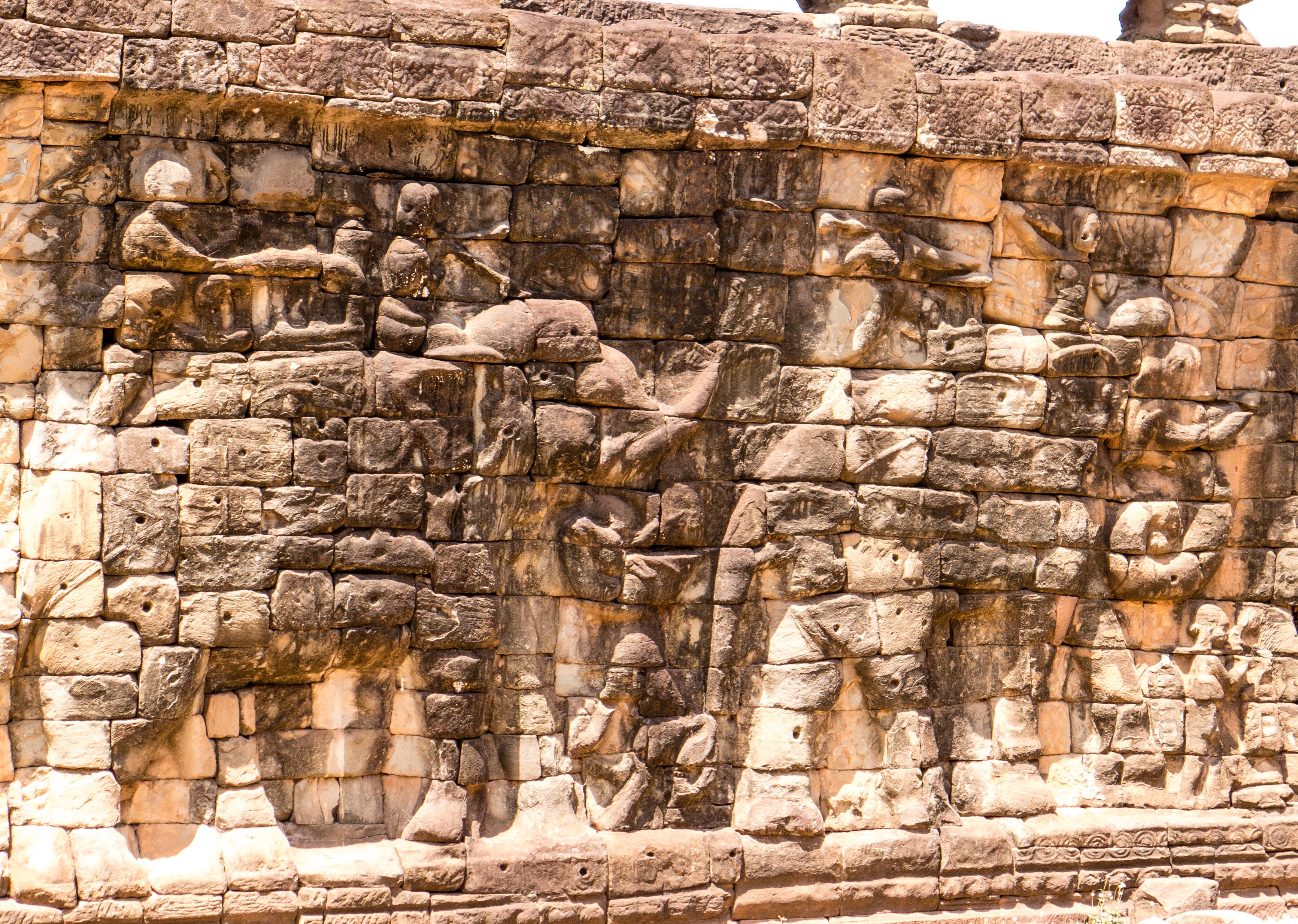
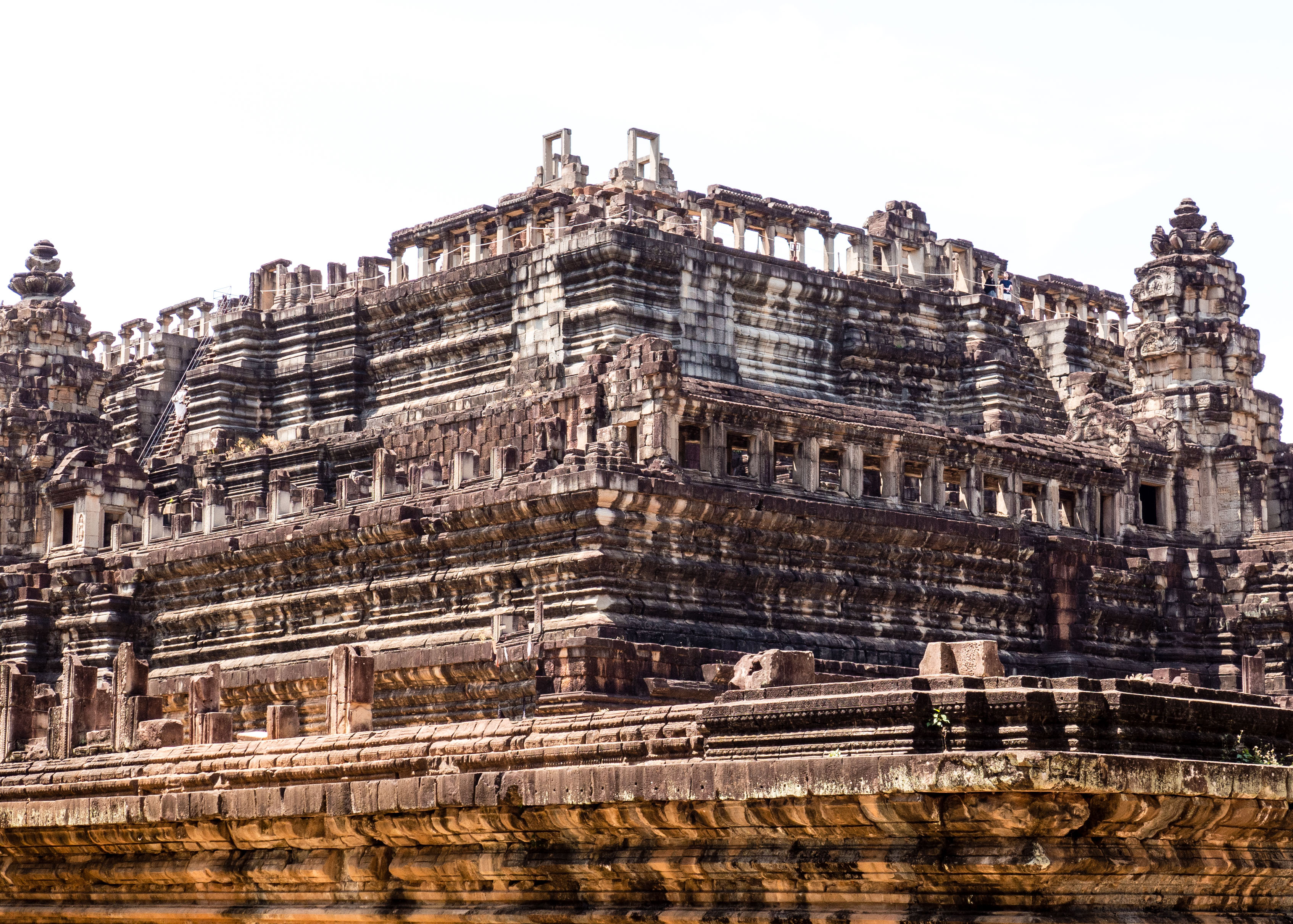
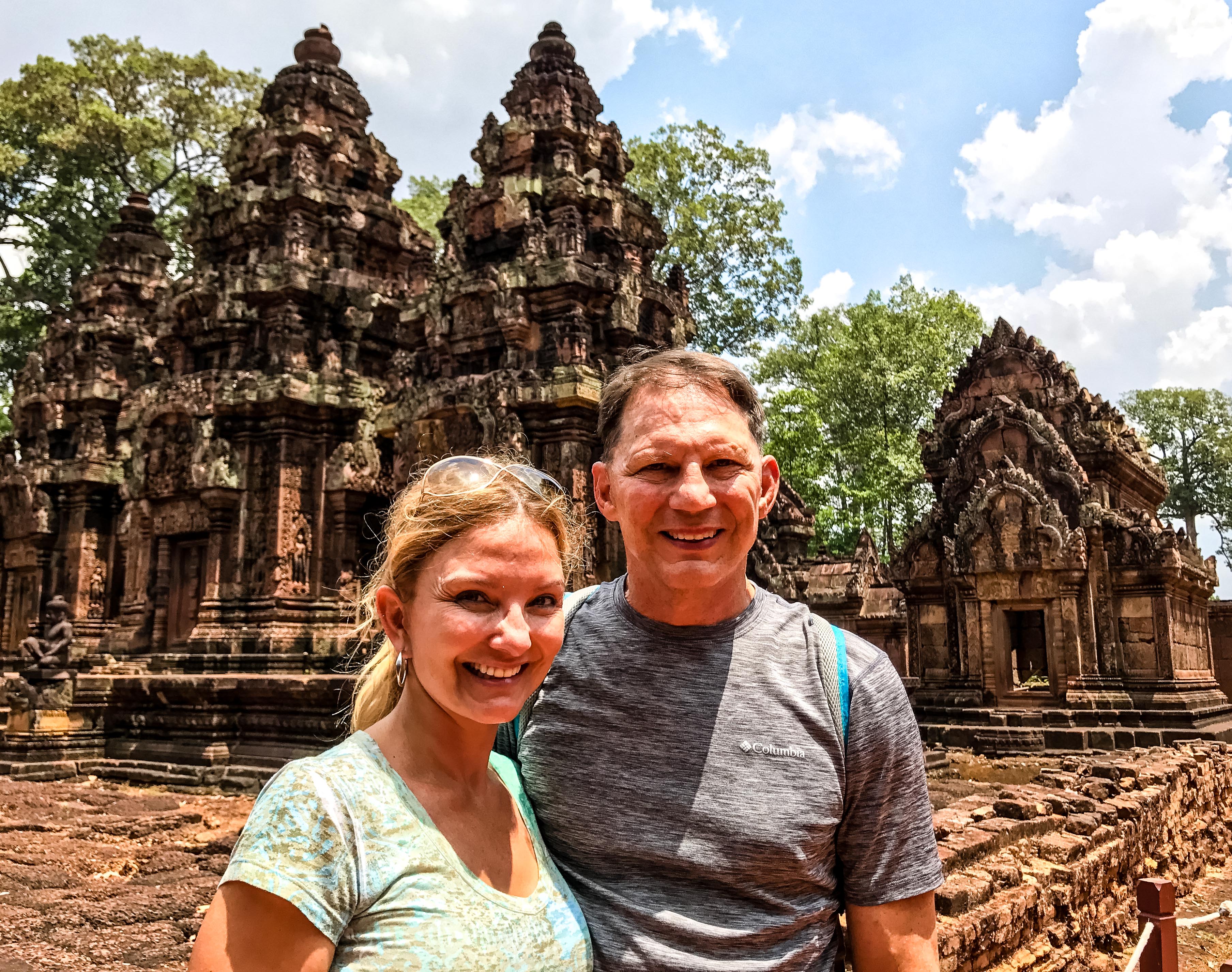
A few more pics of Siem Reap from the air and then we were on to Vietnam. Next up: A motorbike tour through Central Vietnam – we’re going on a ‘venture!

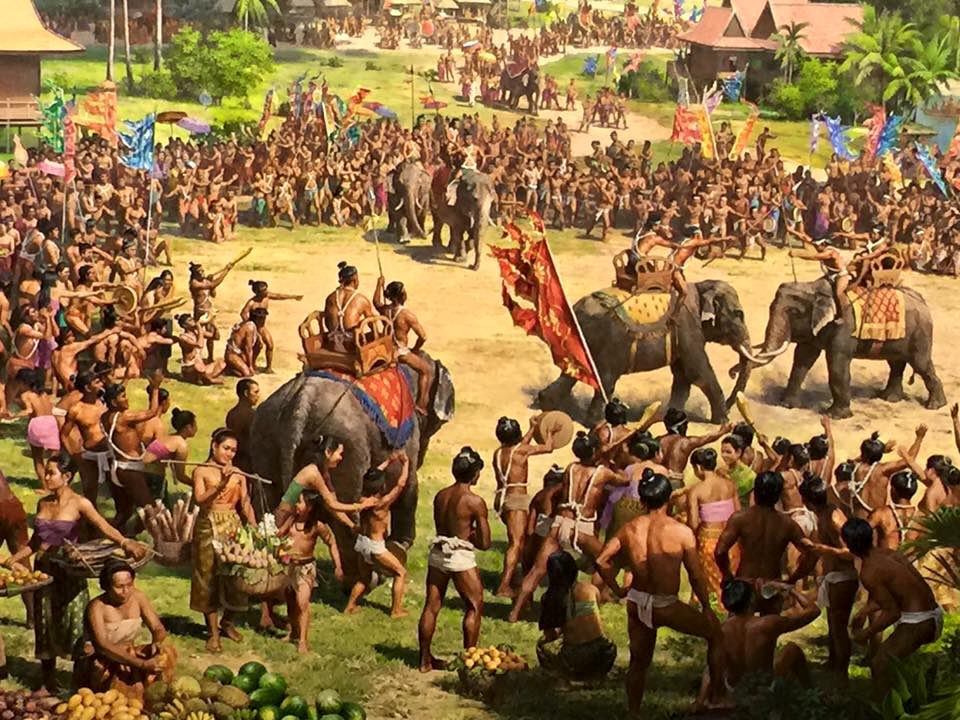
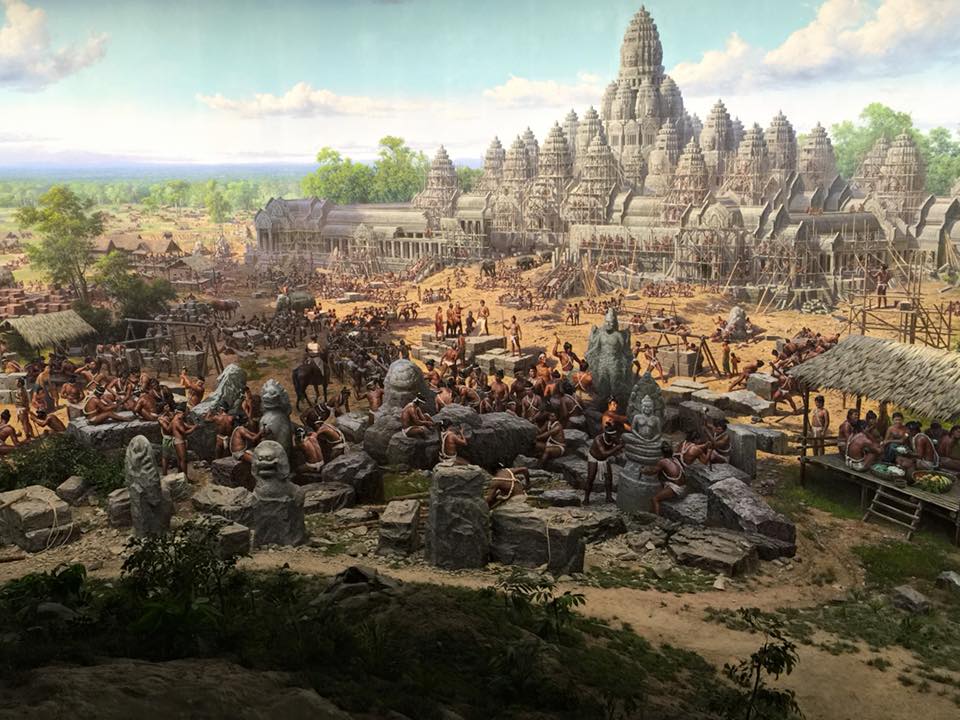
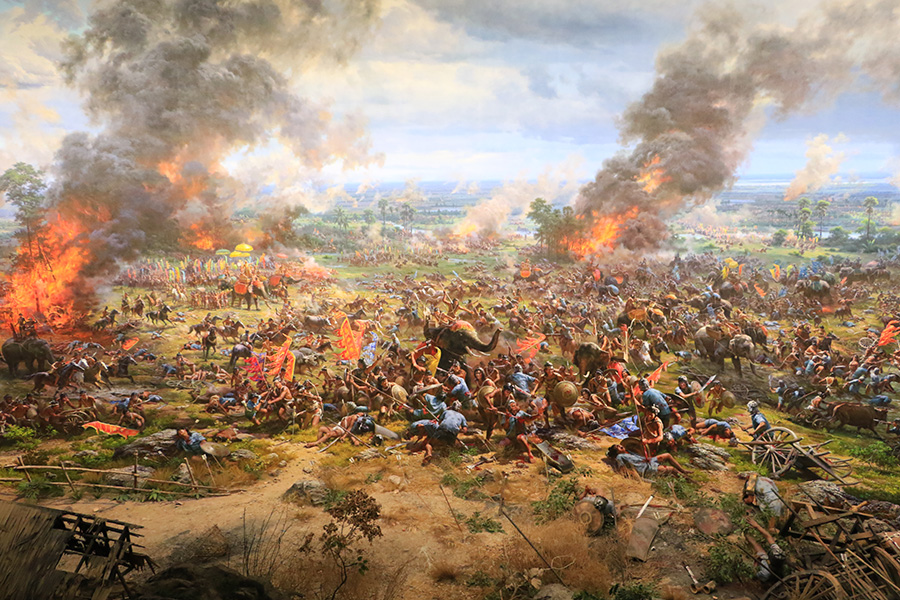
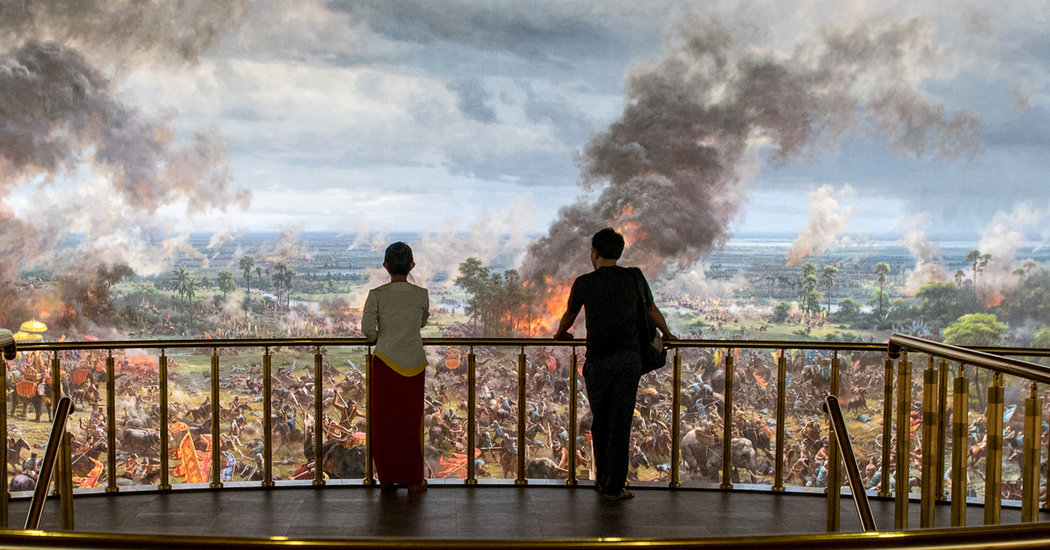
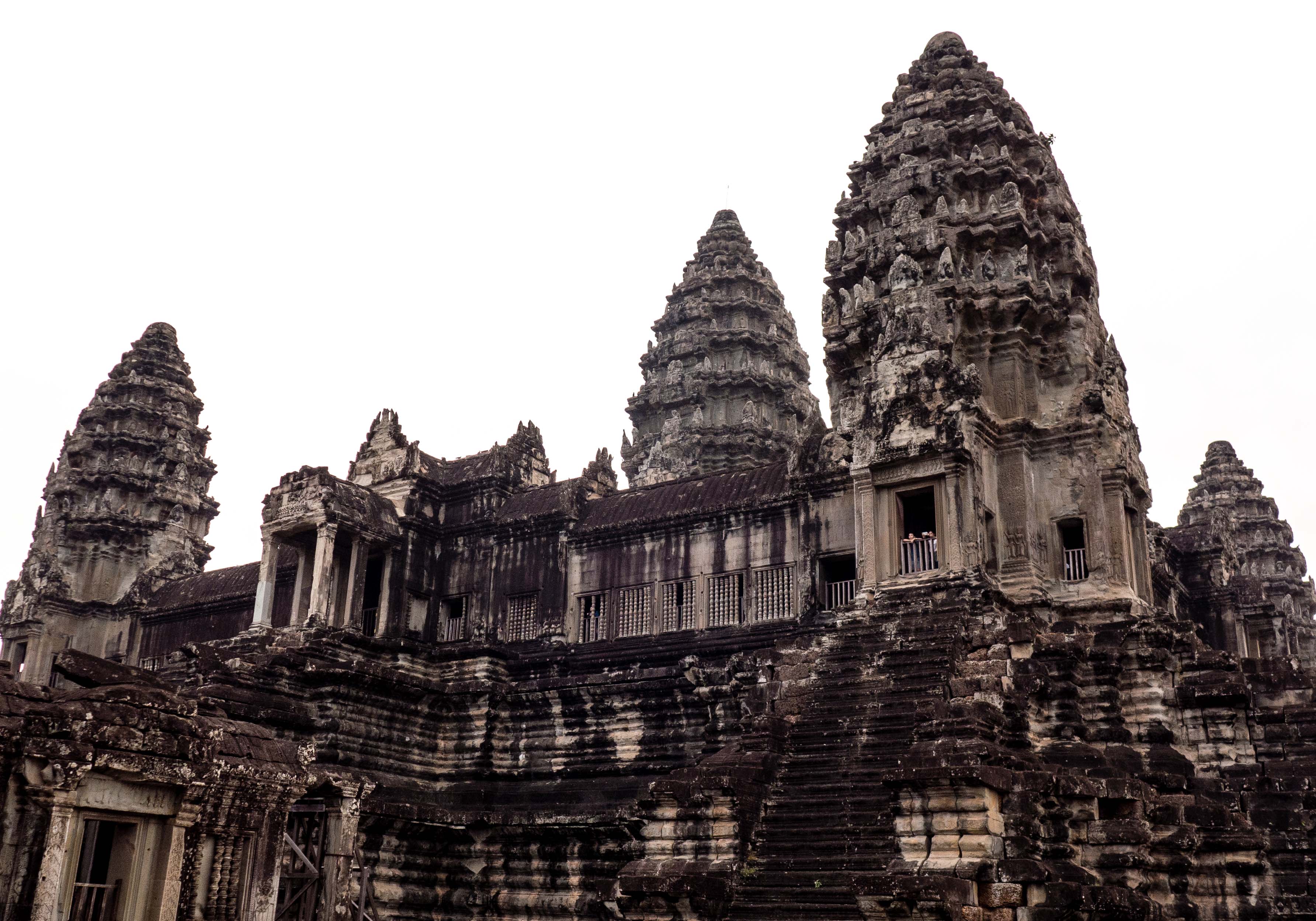
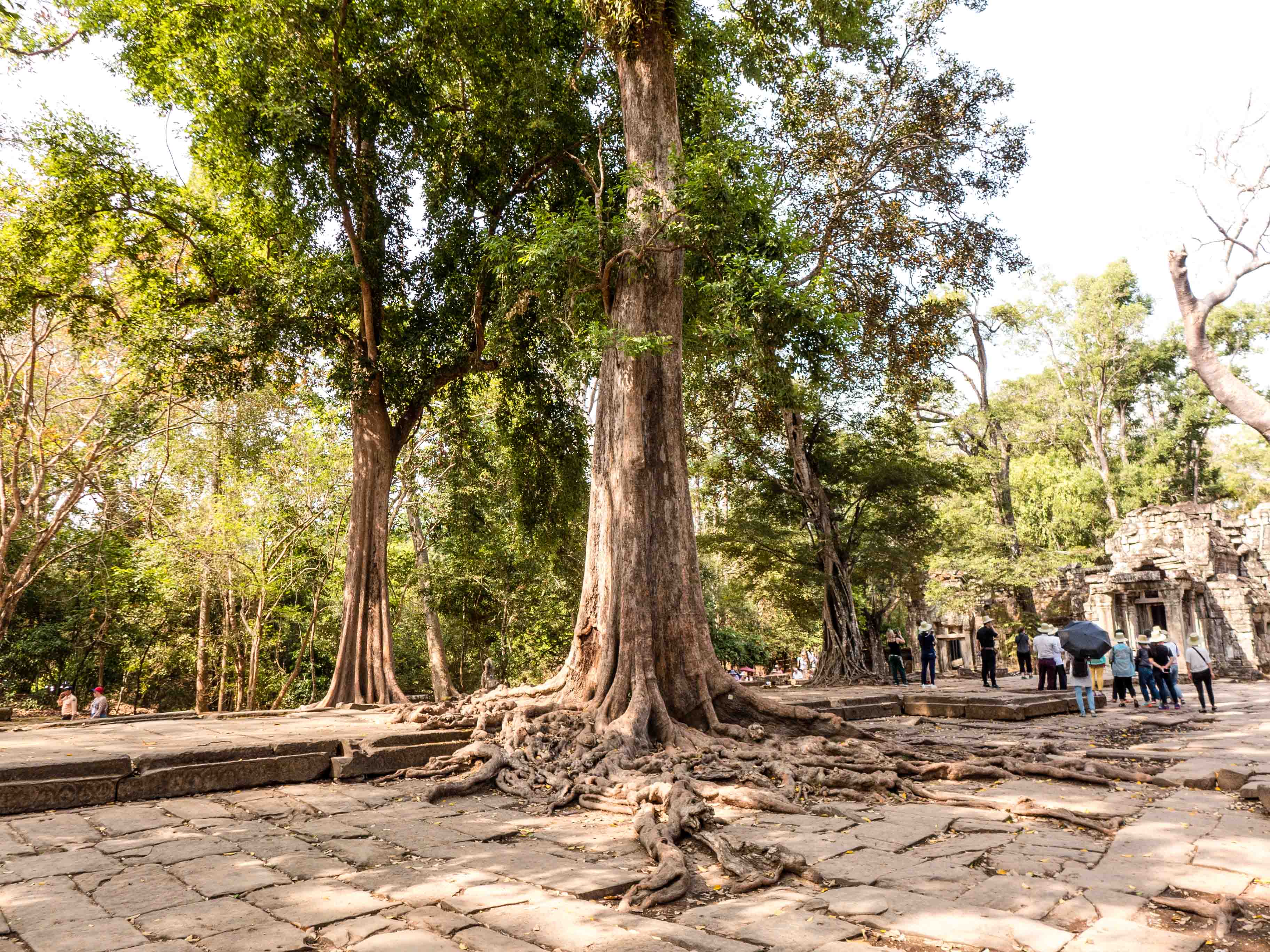
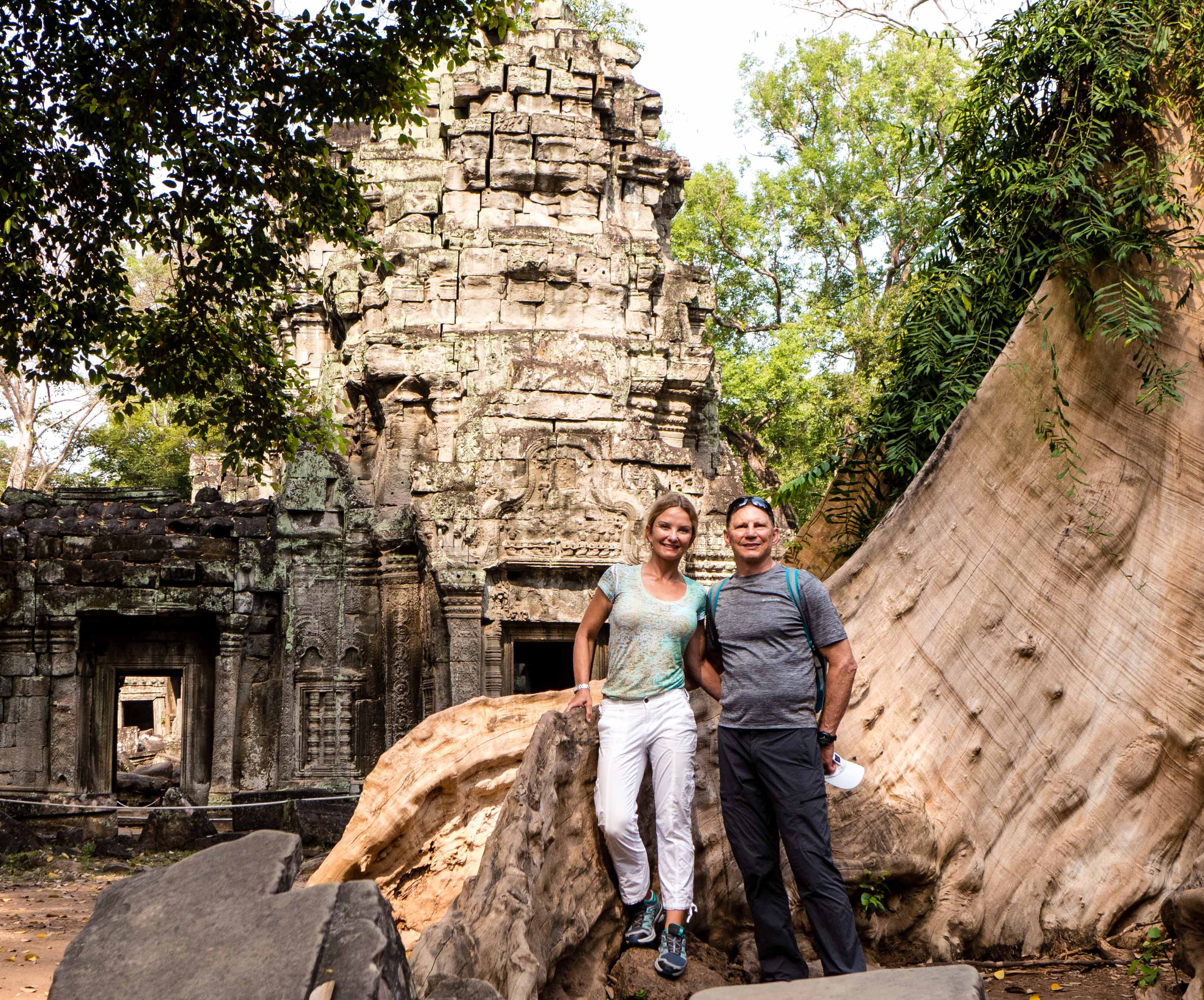

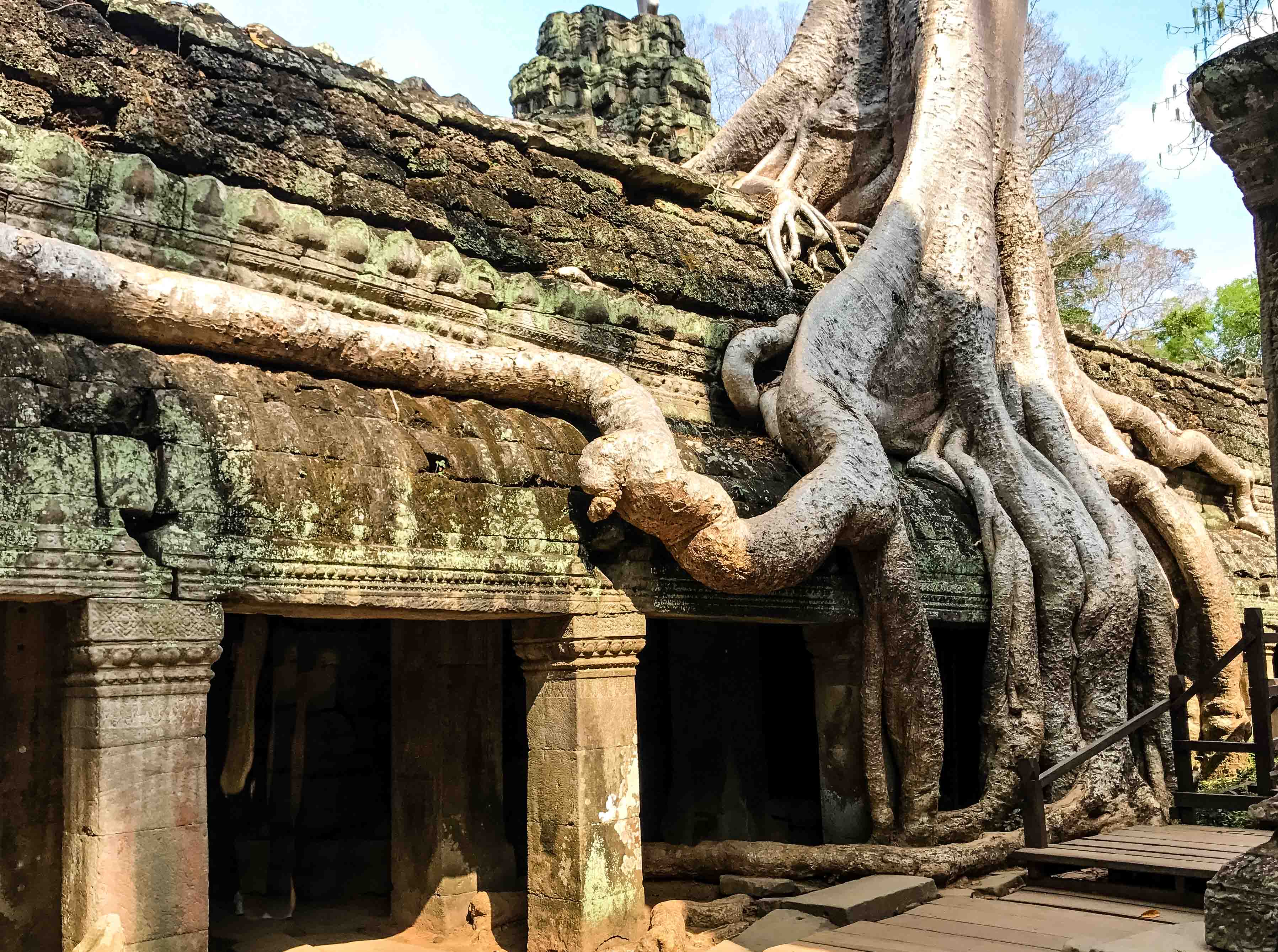
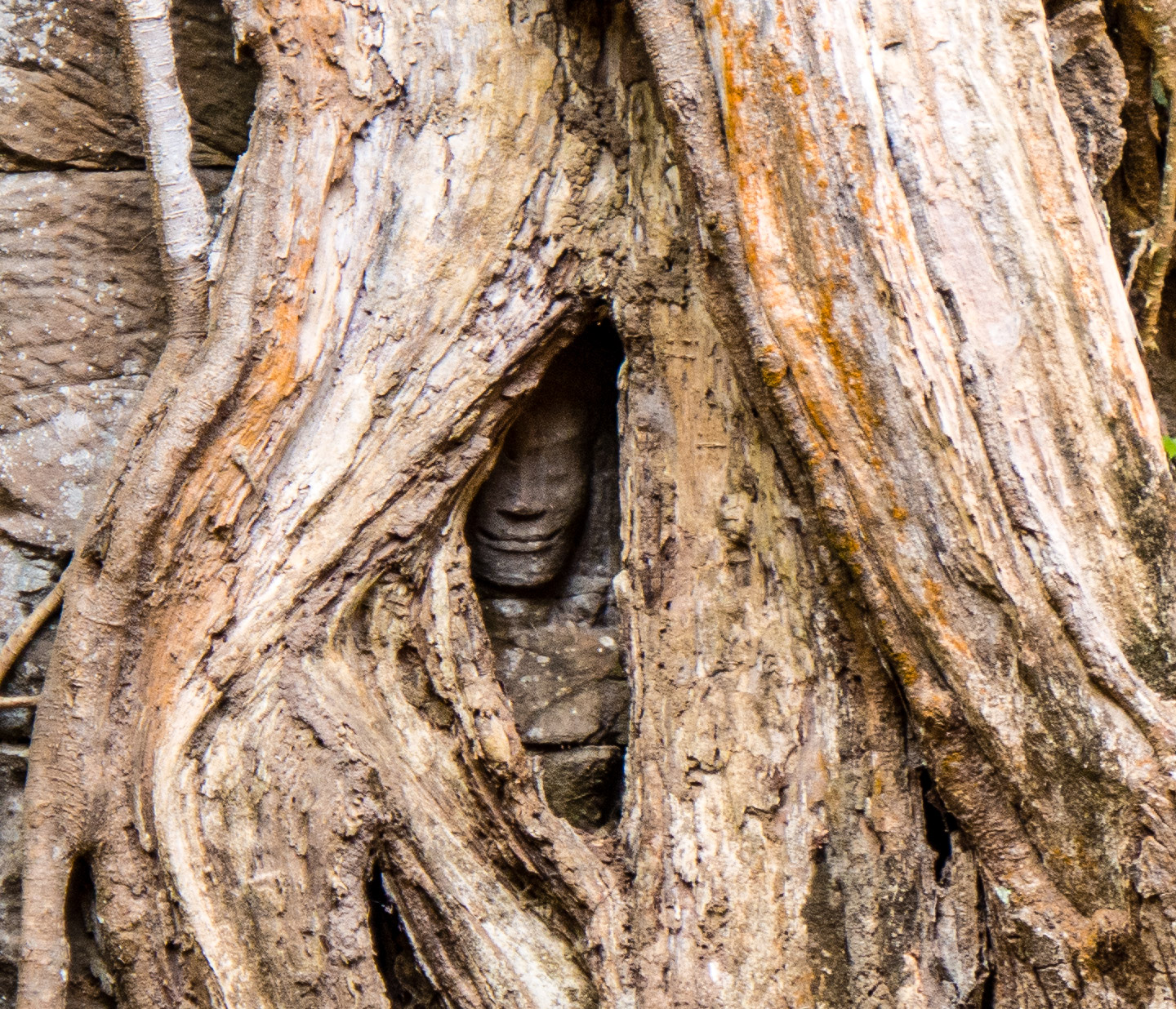
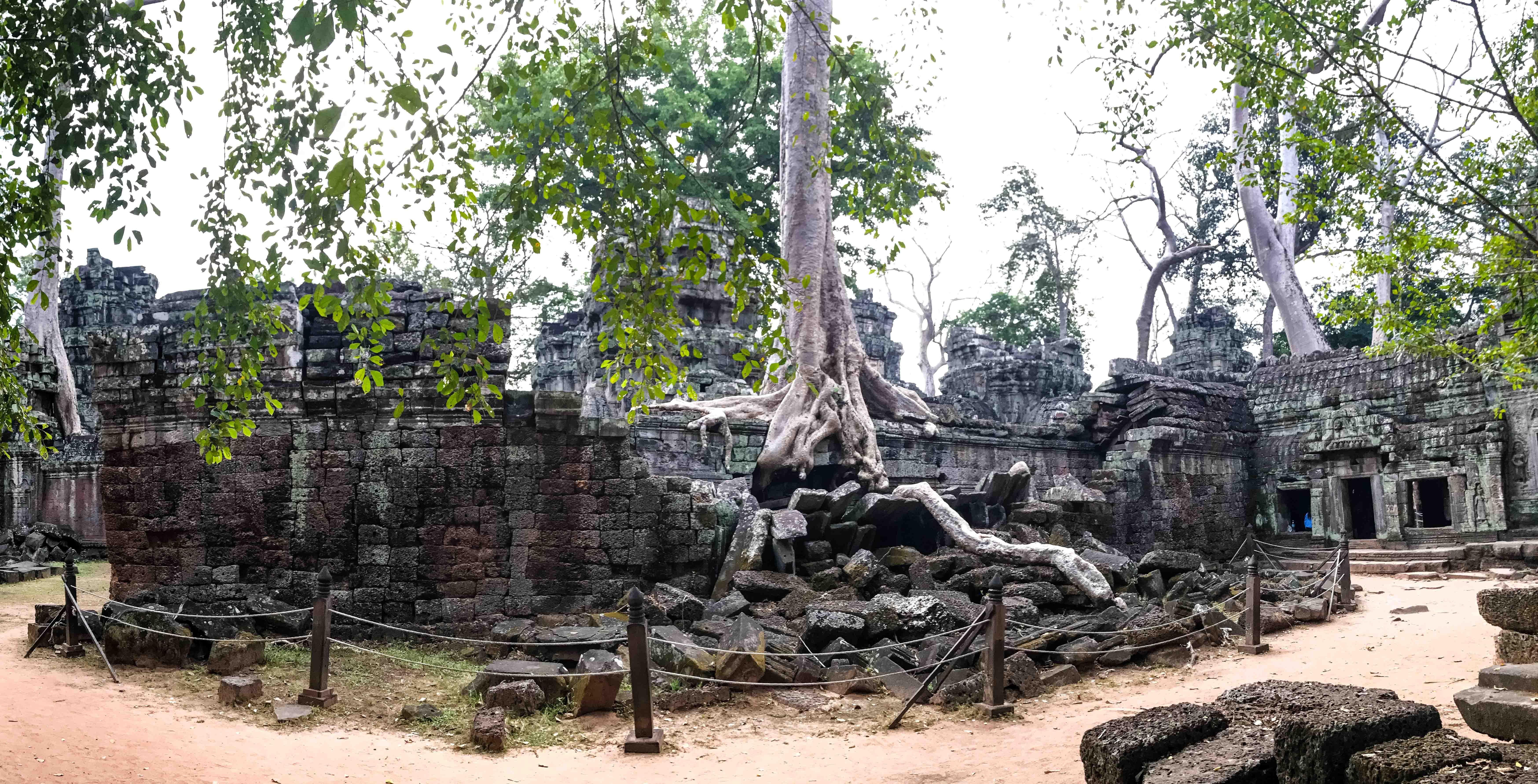
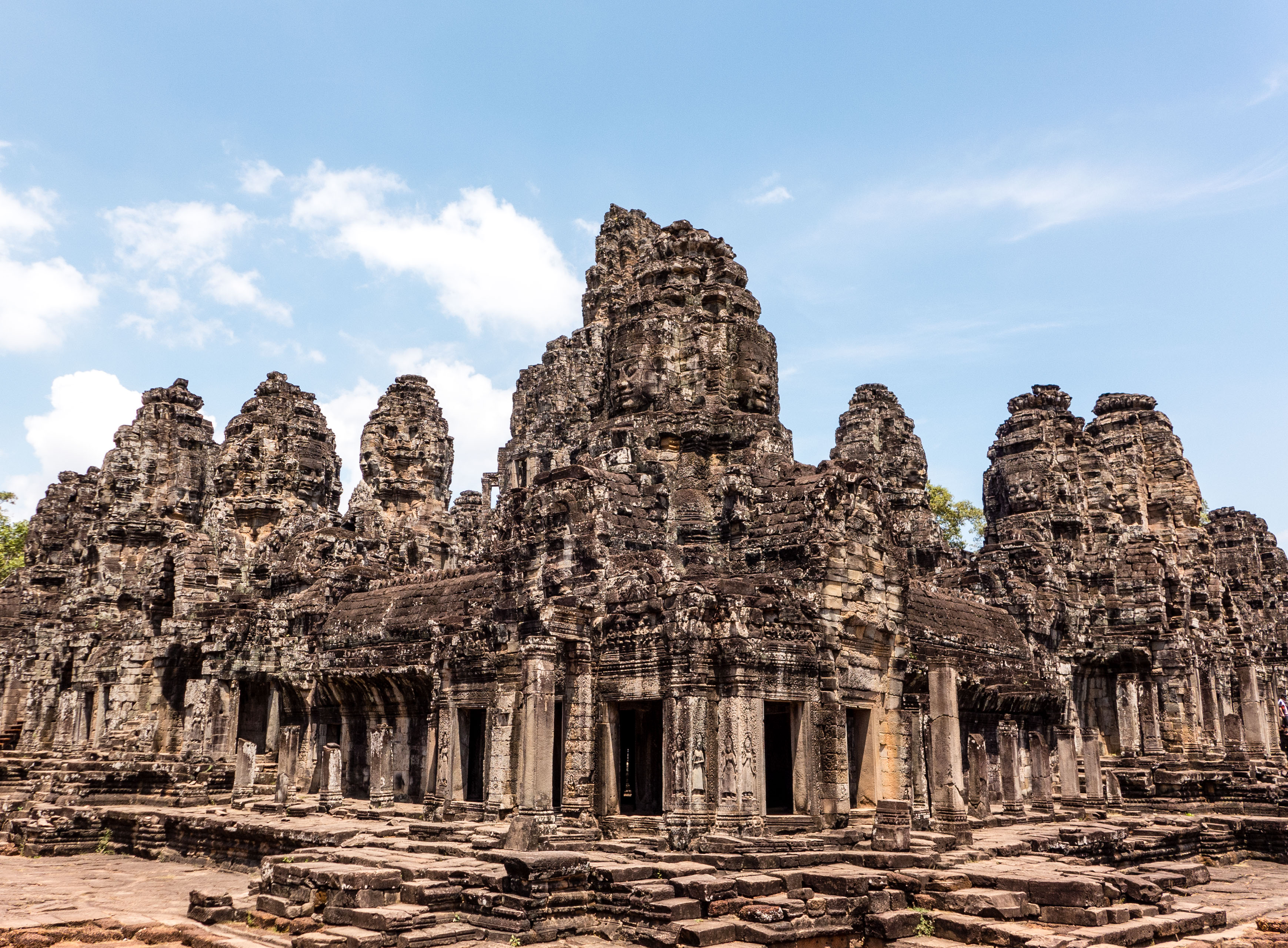
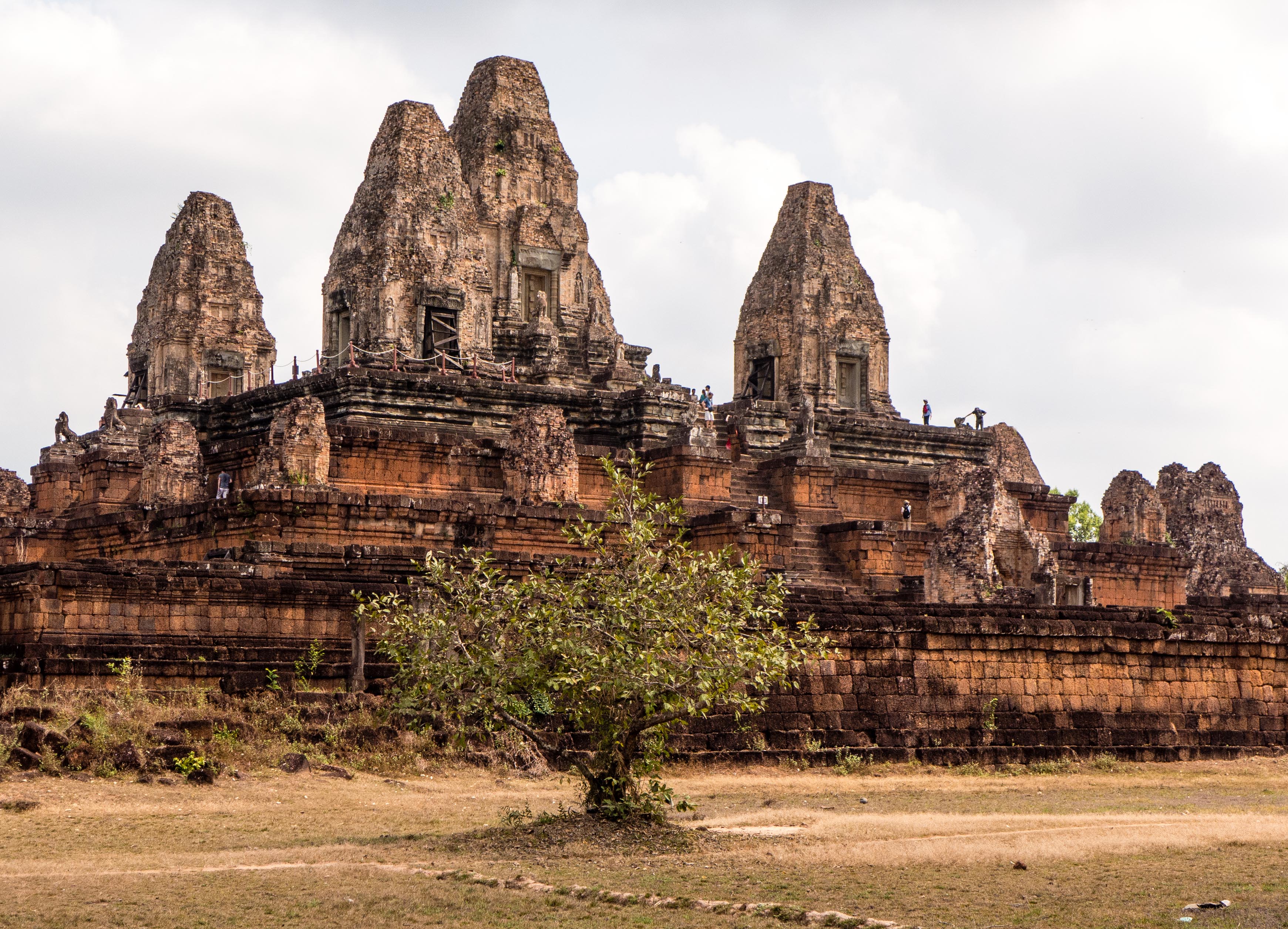
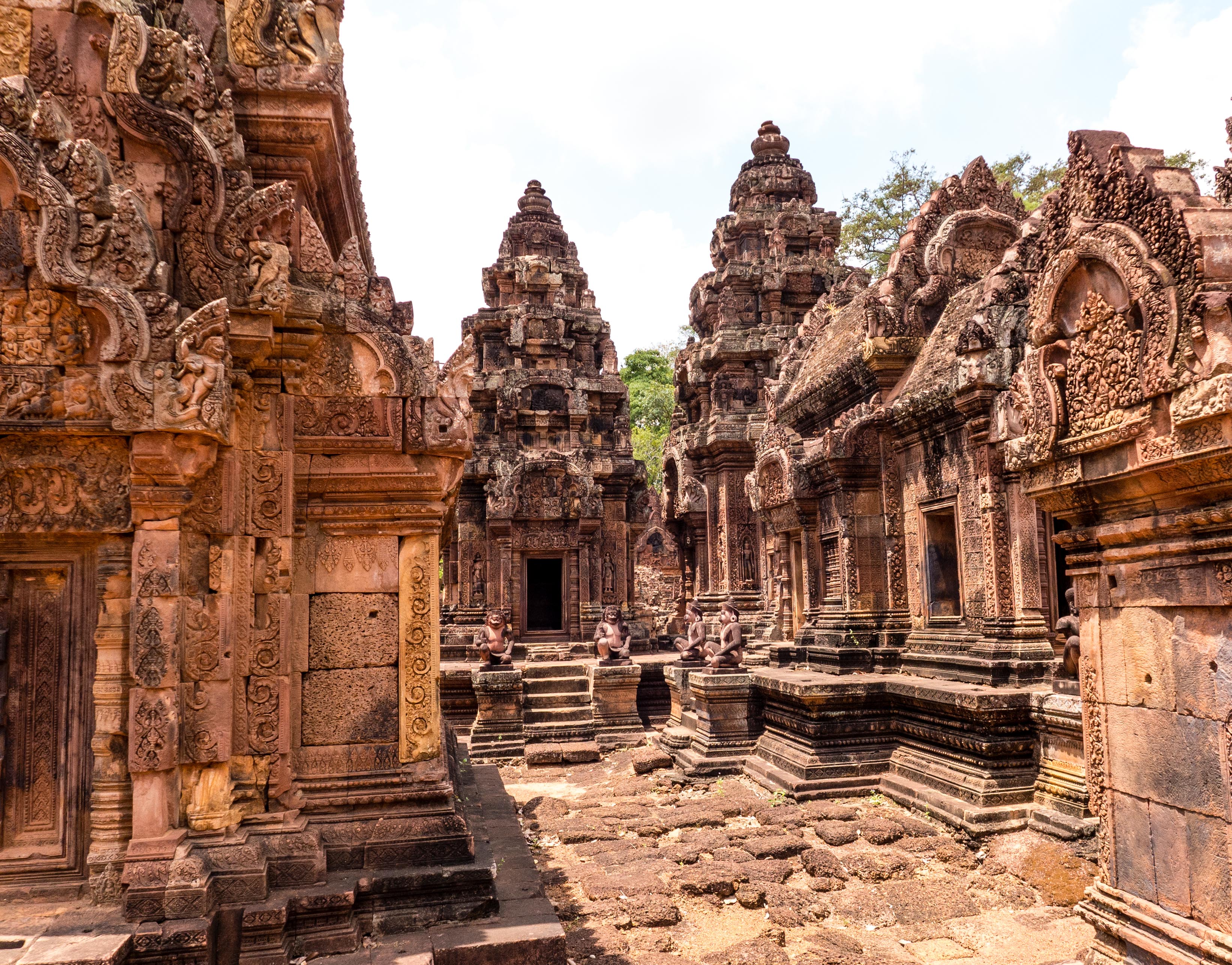
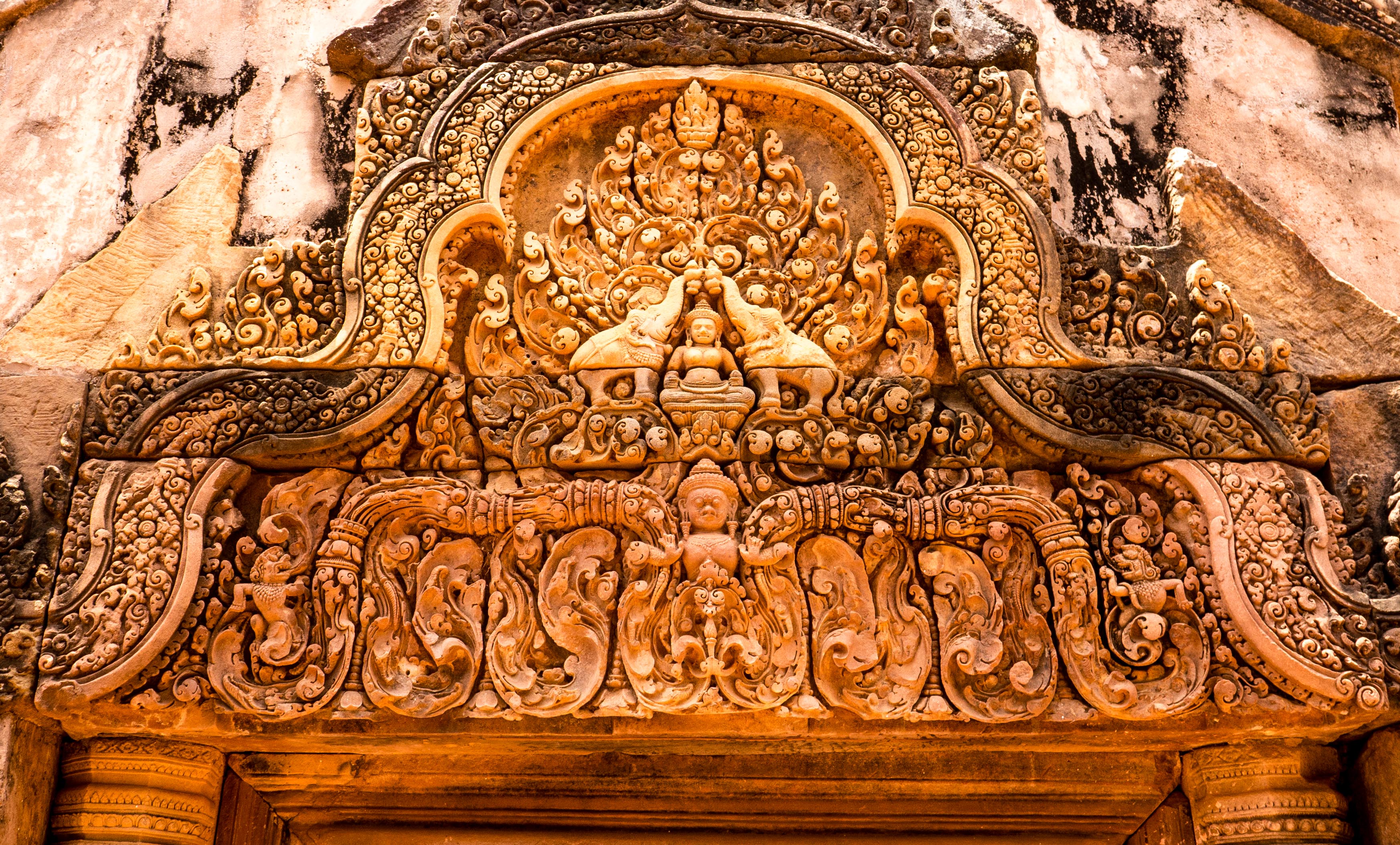



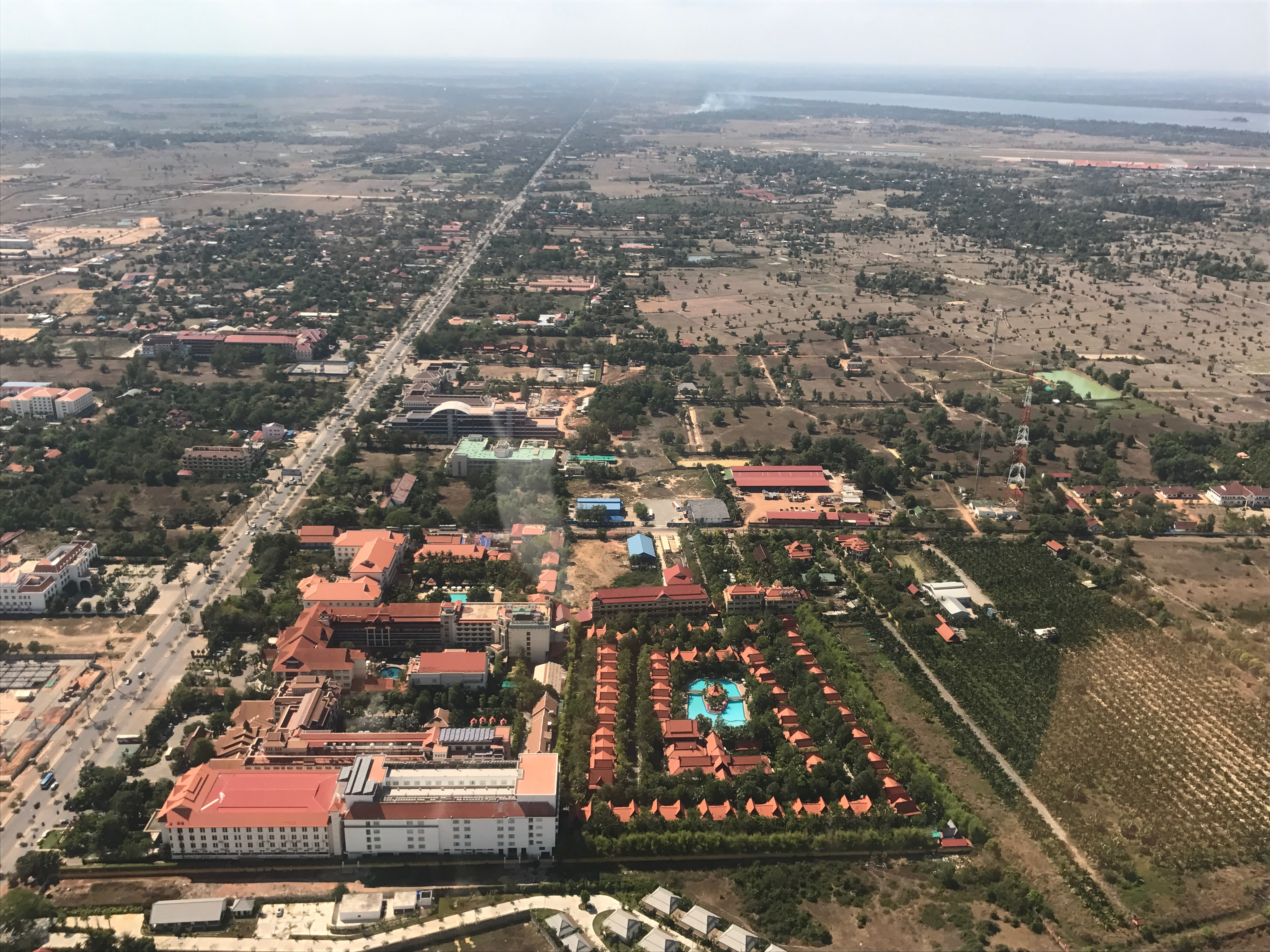


I am constantly AMAZED by what you have seen, what you are doing, how expertly you report with stunning pictures PHEW!!! XXXX
Are you taking stamina pills???
The floating city! A new neighbor every morning when you wake up! 😊